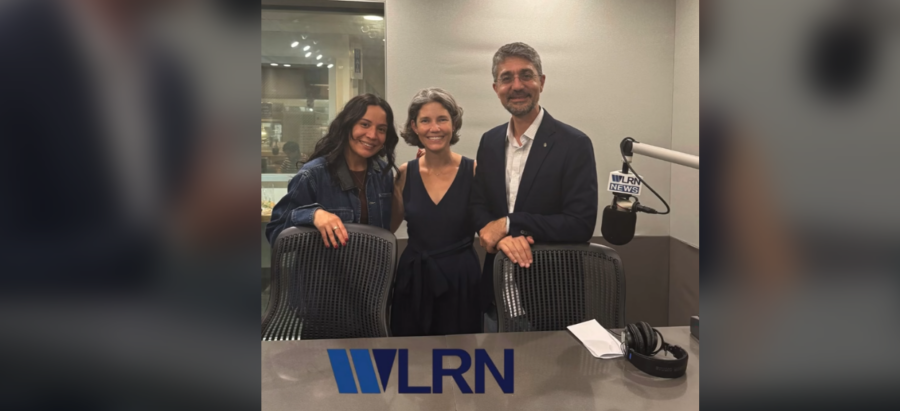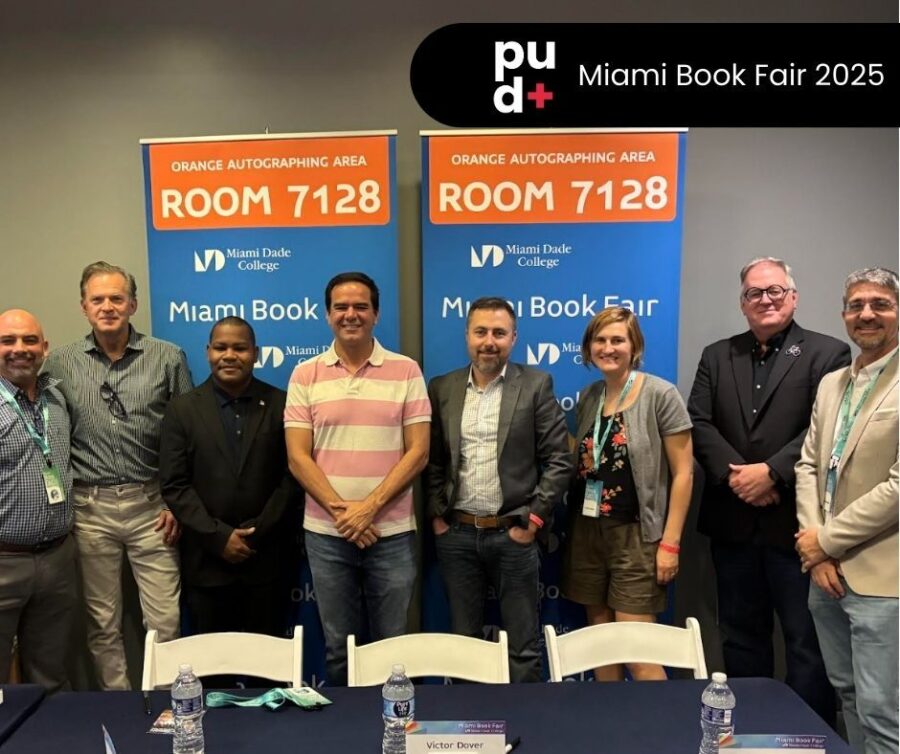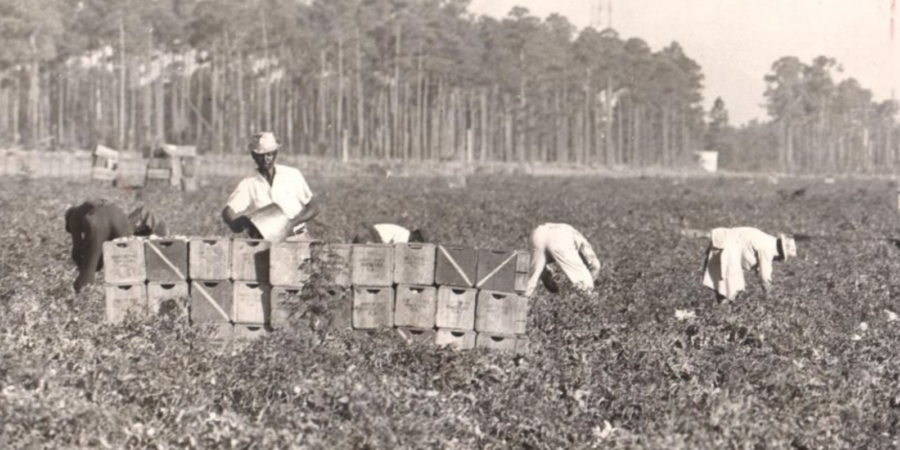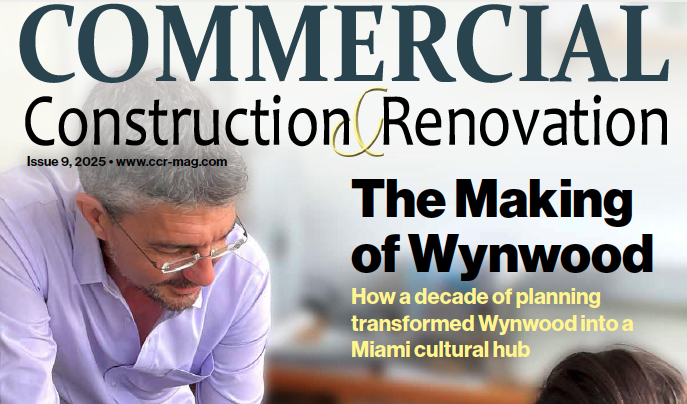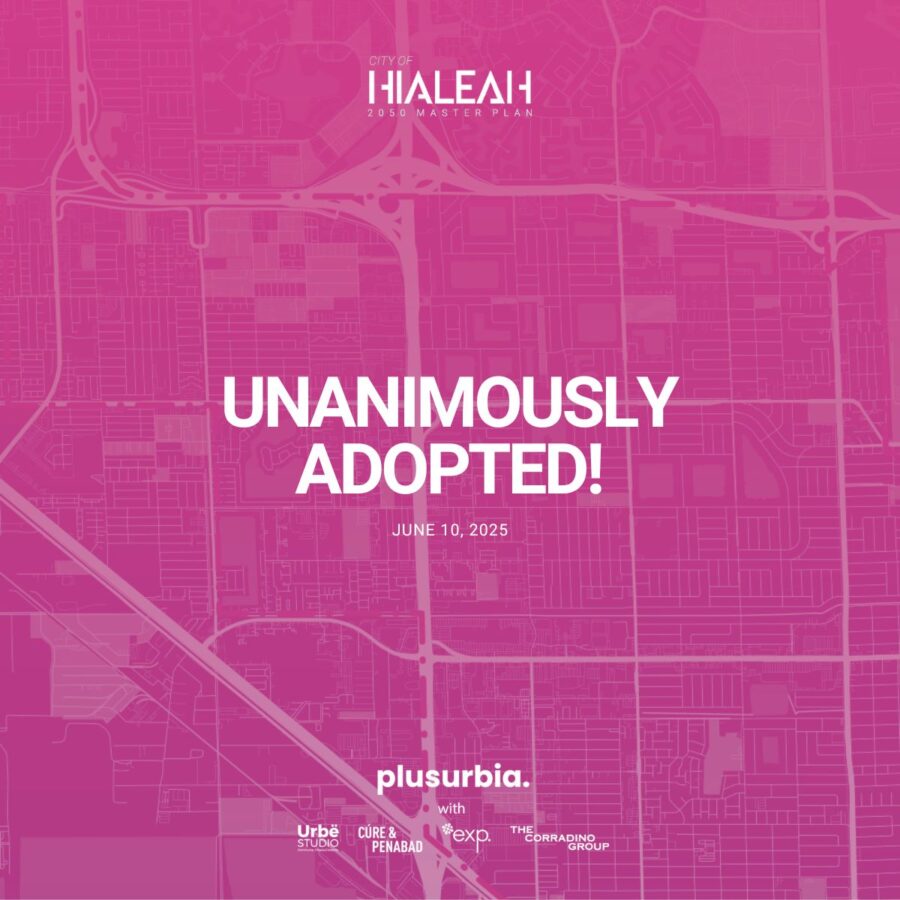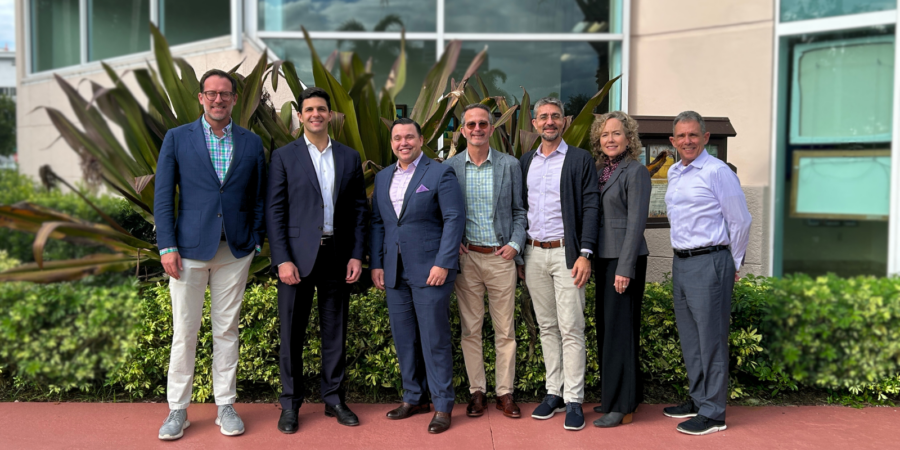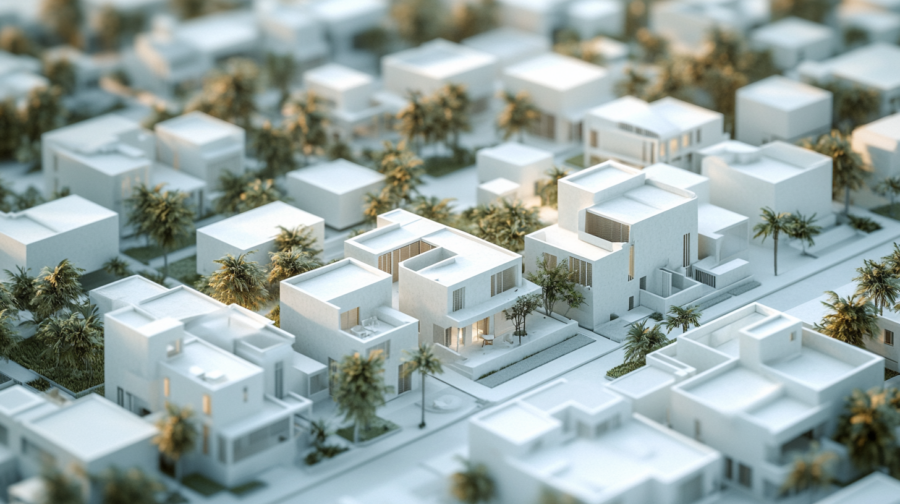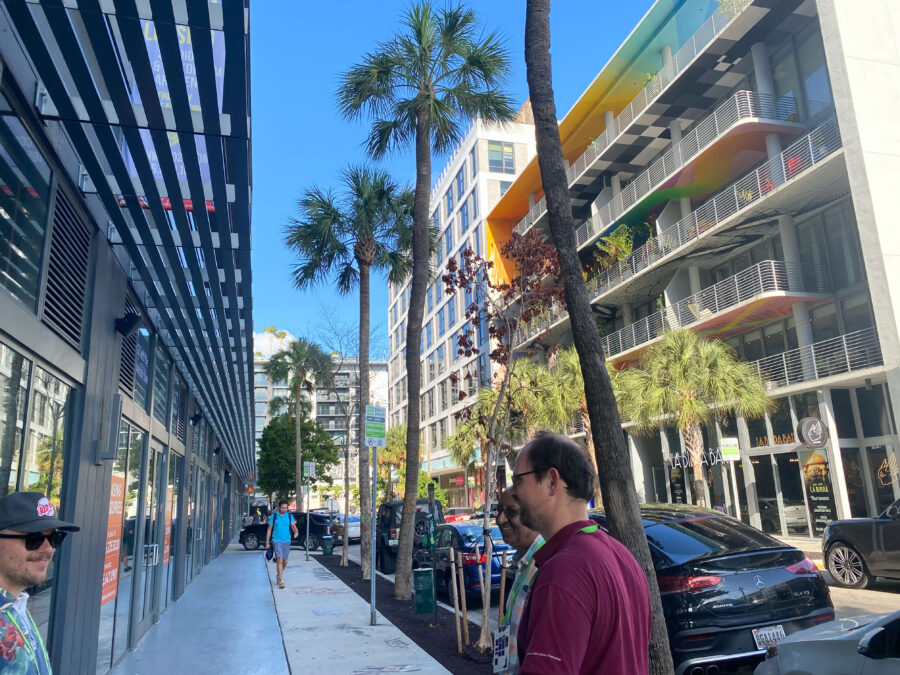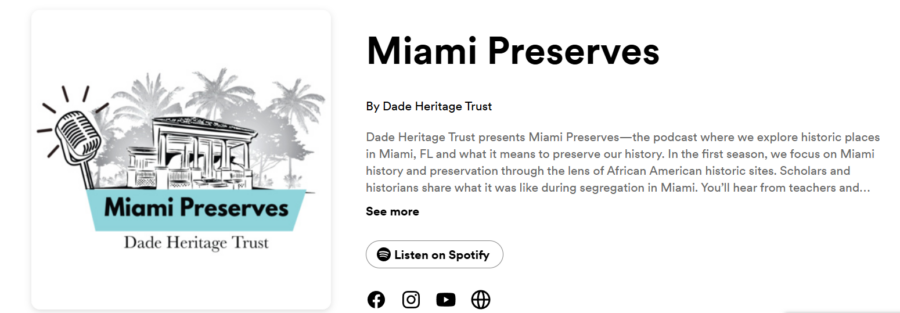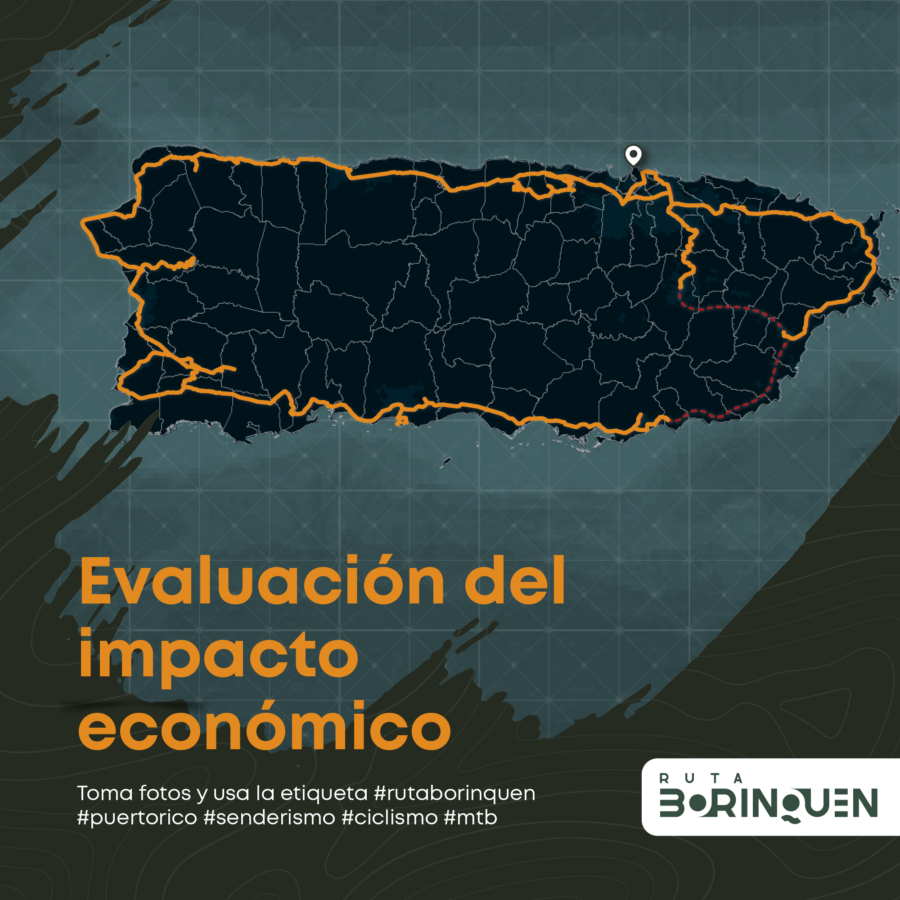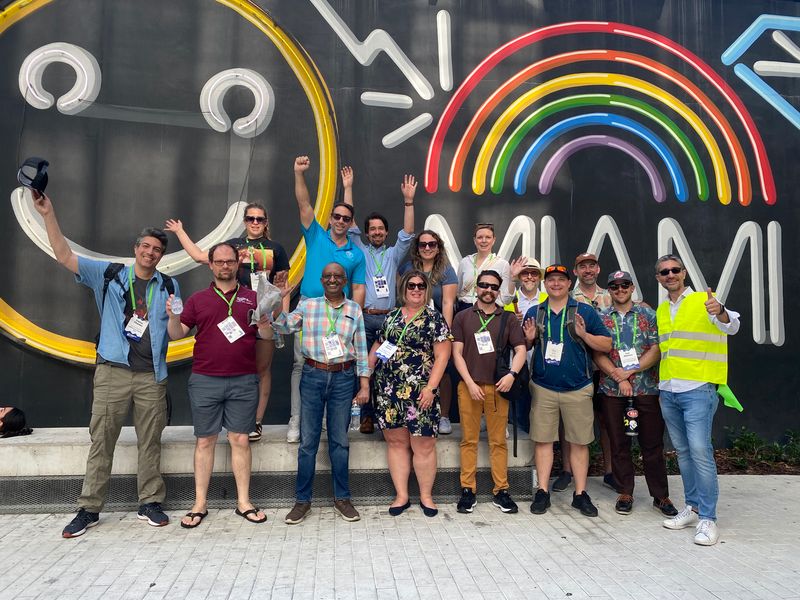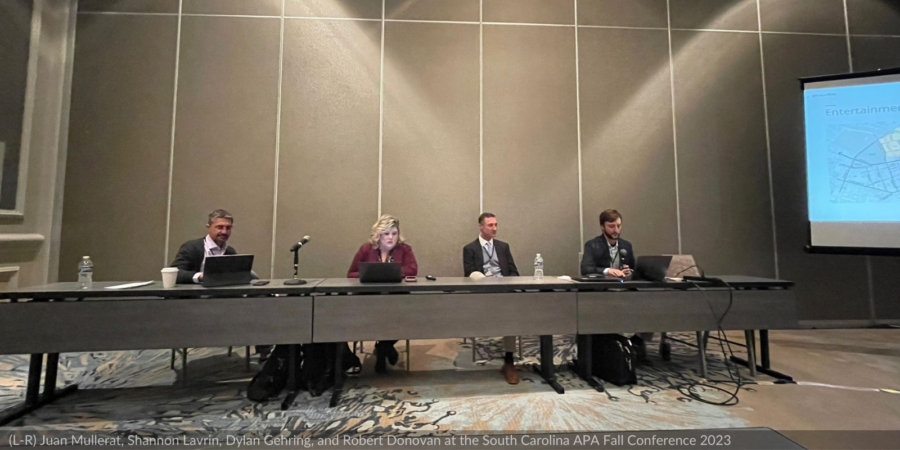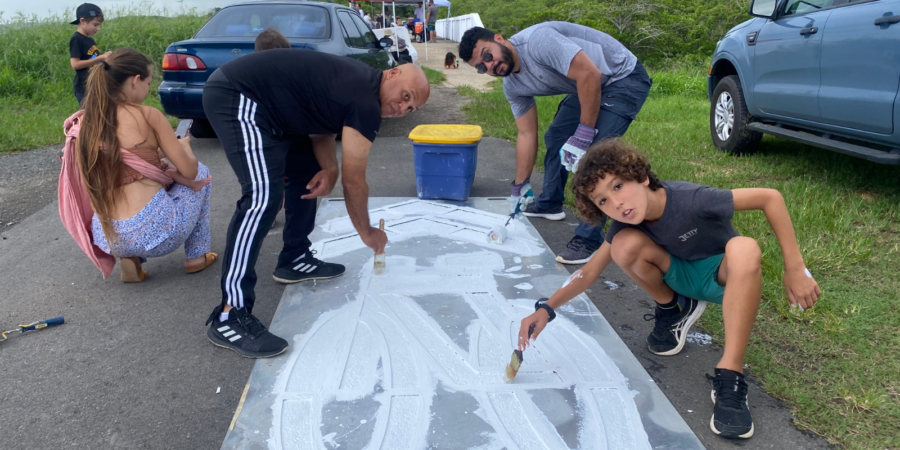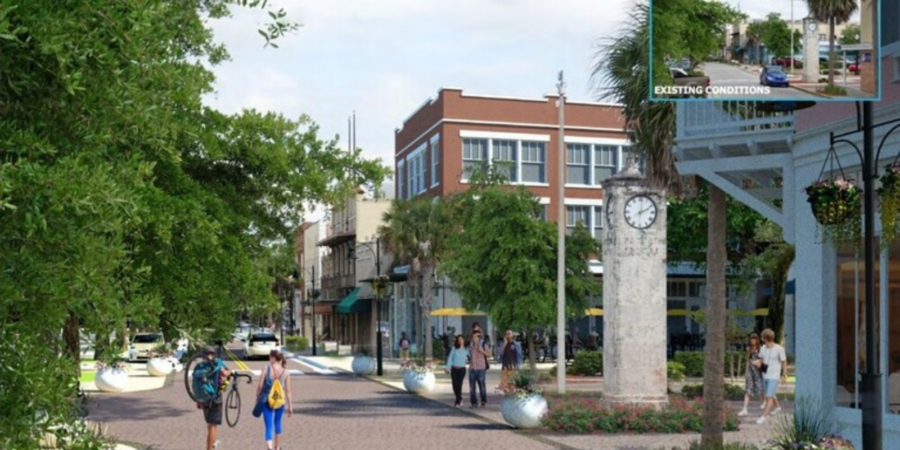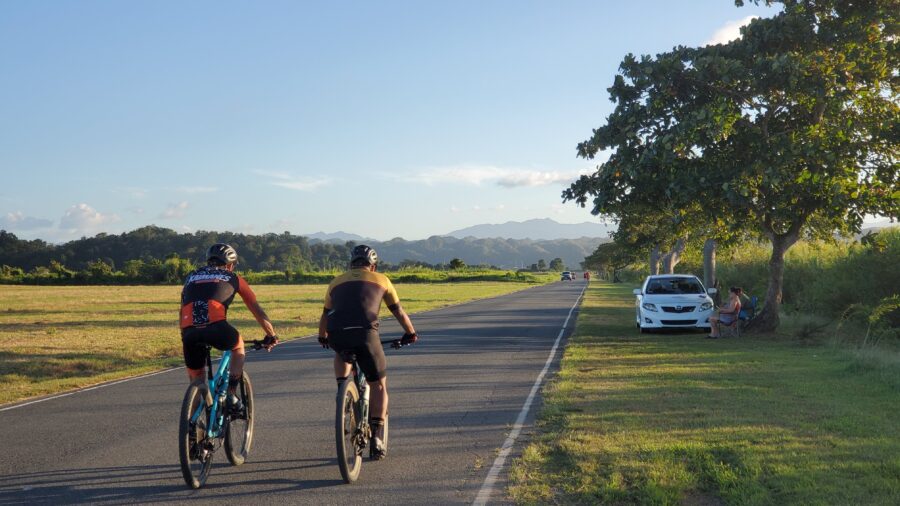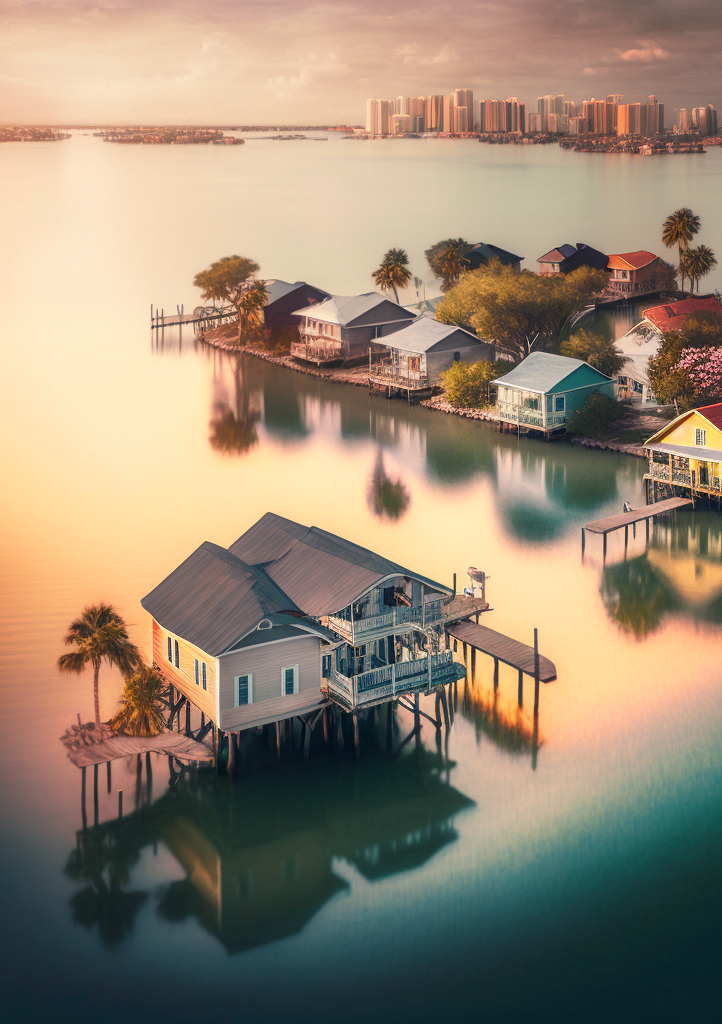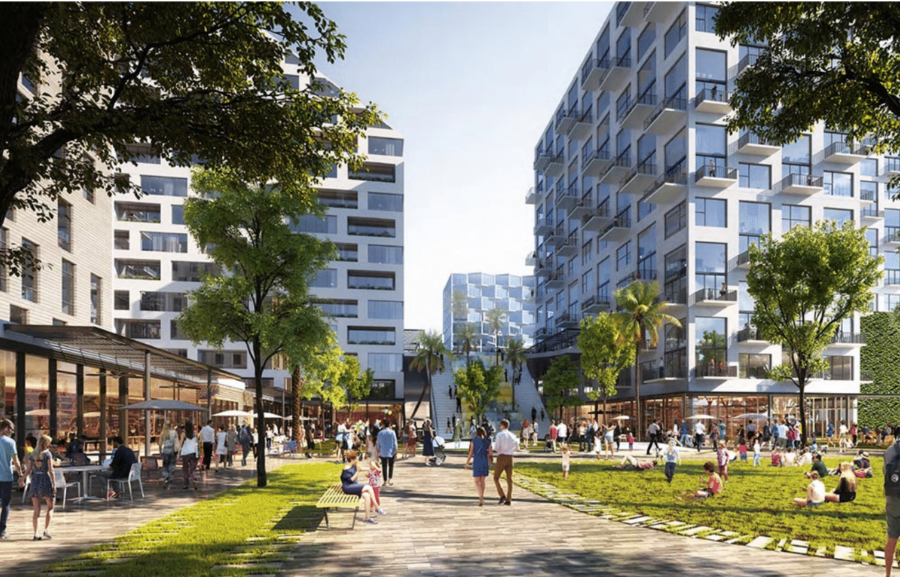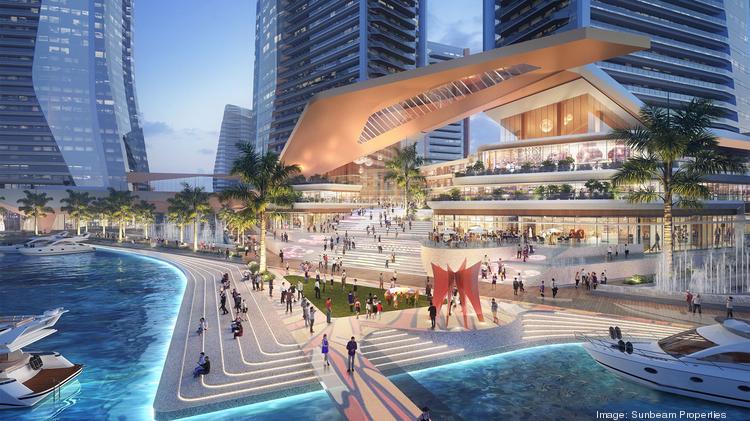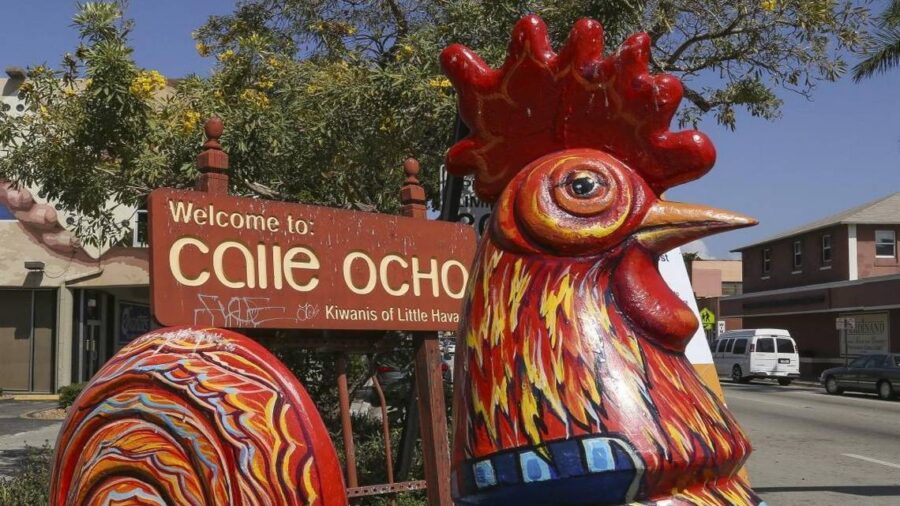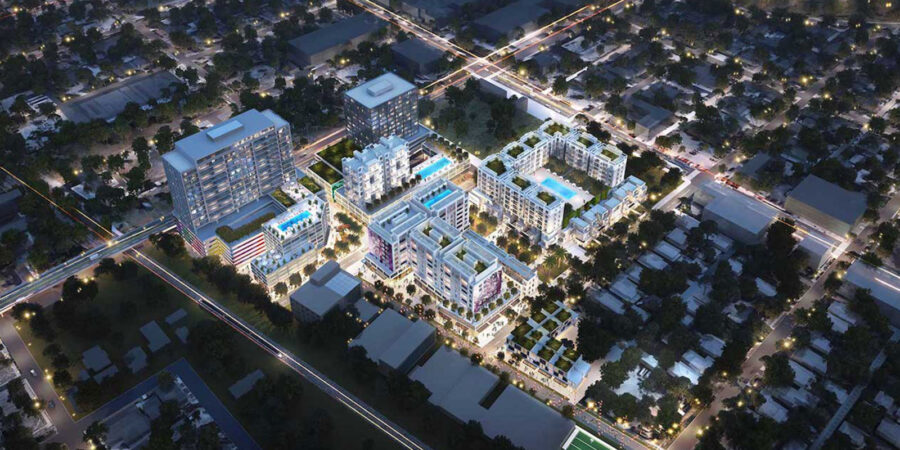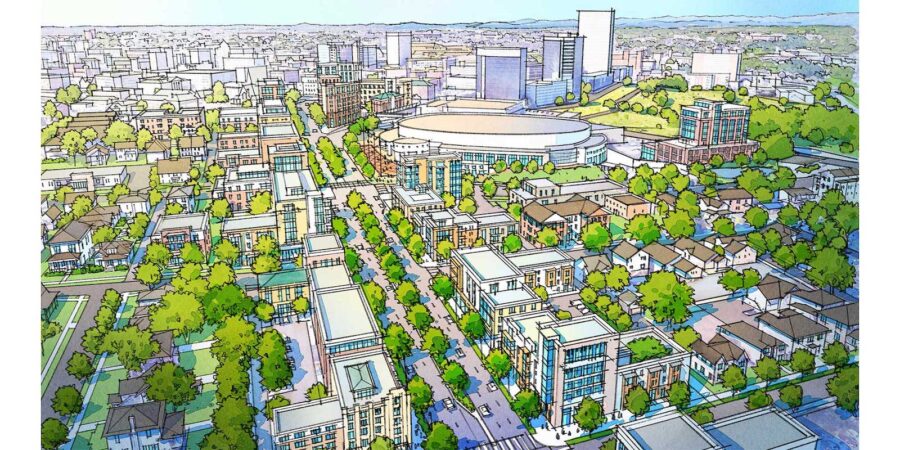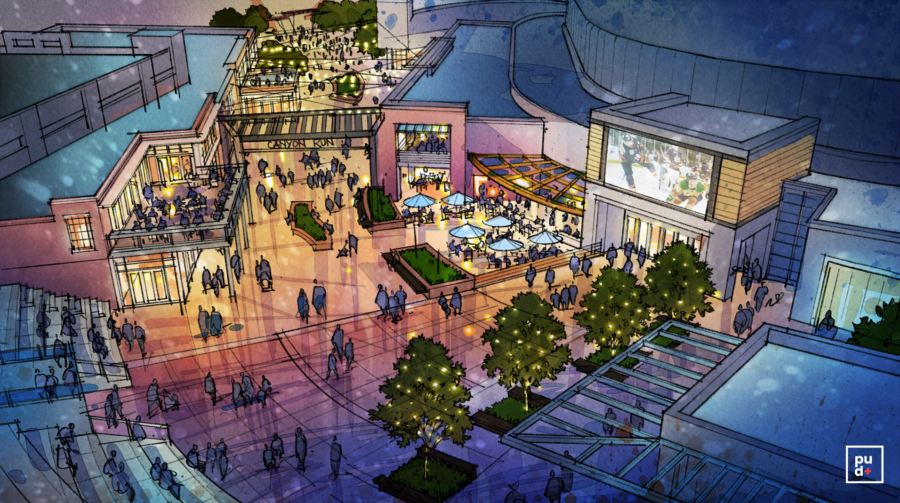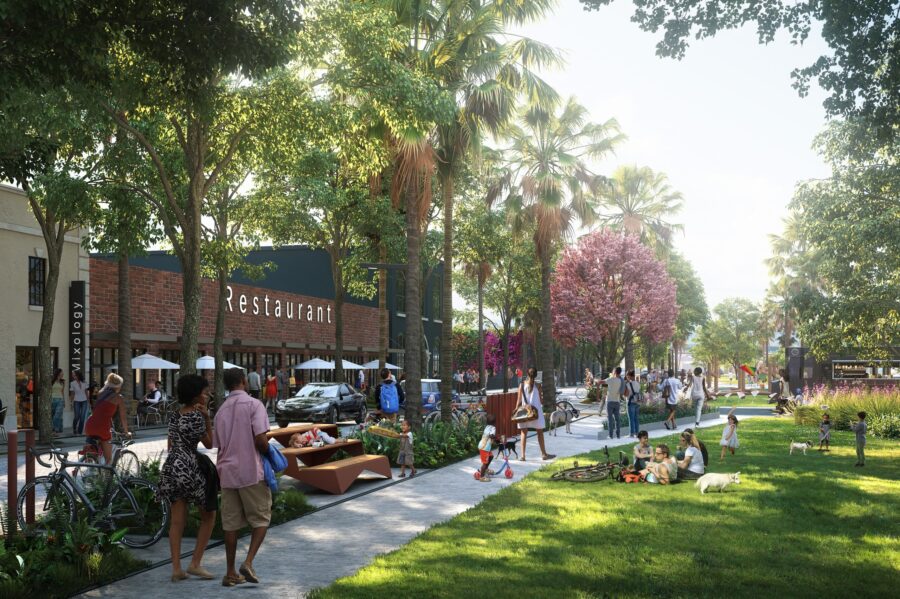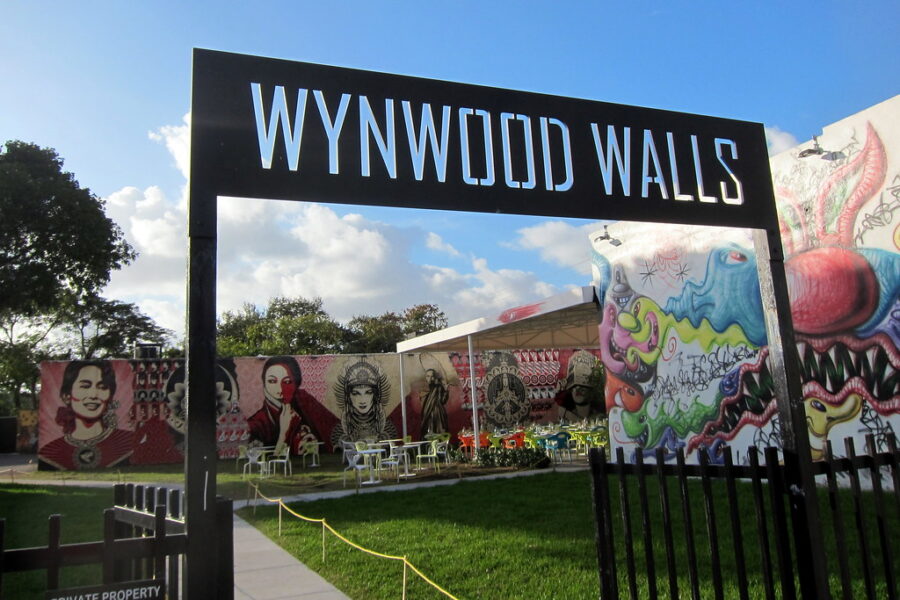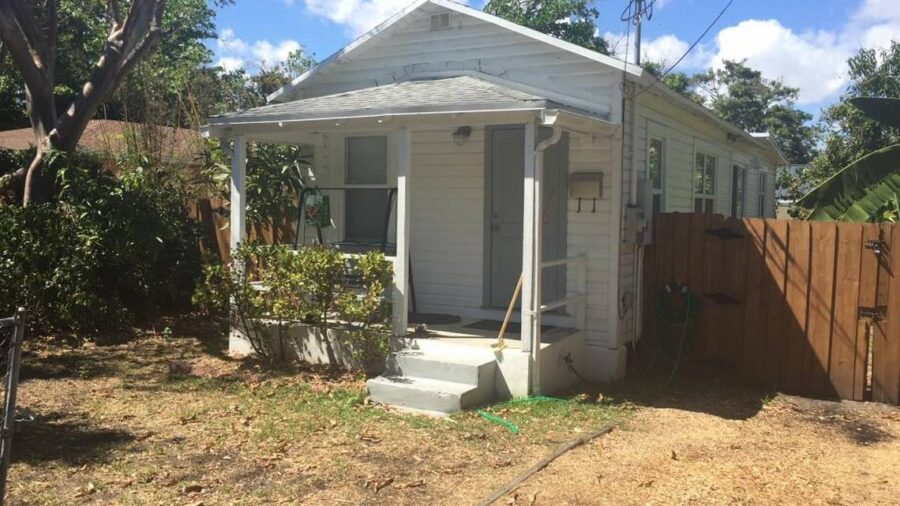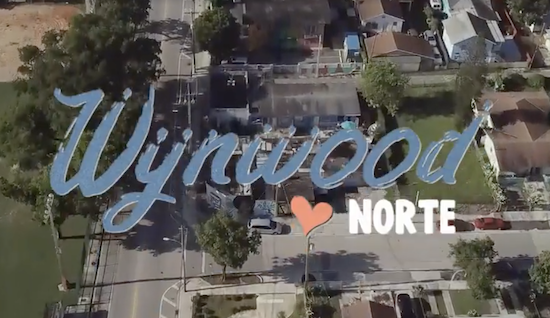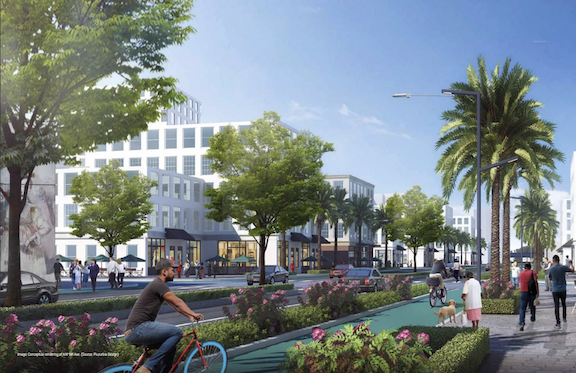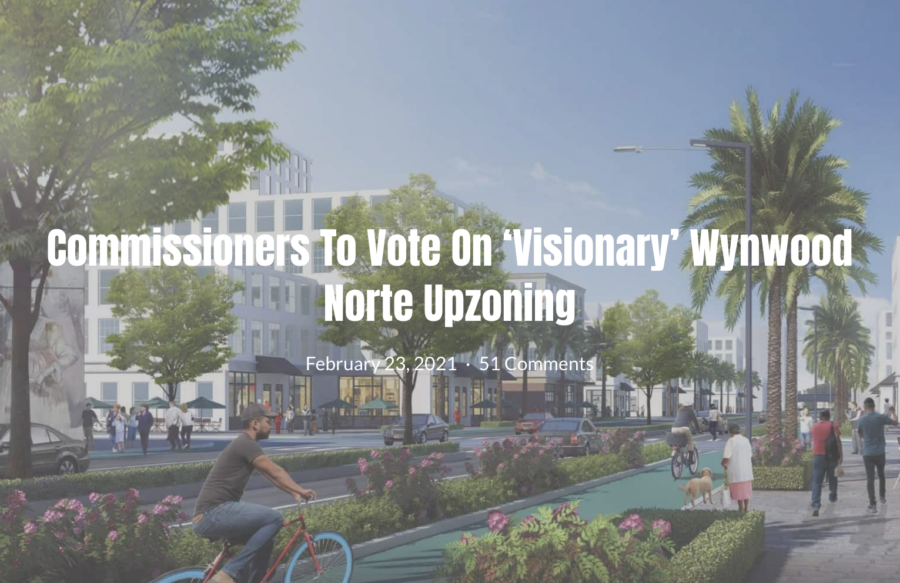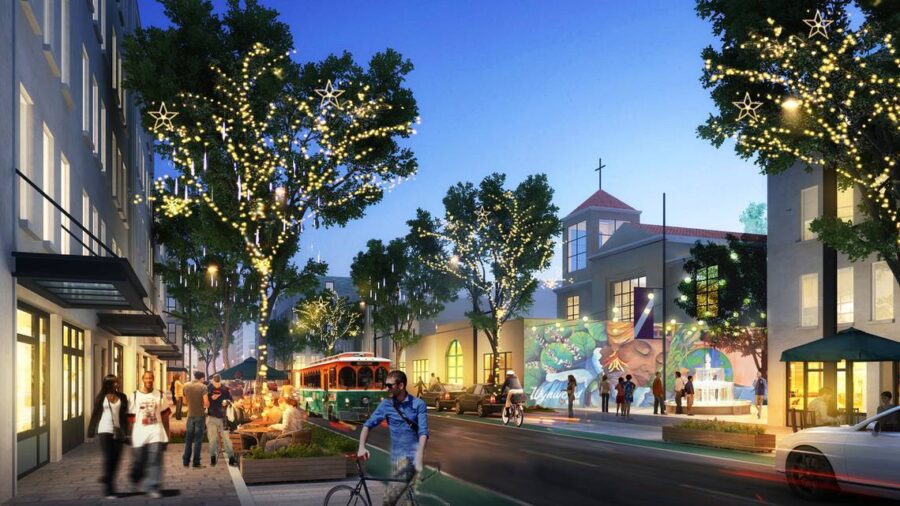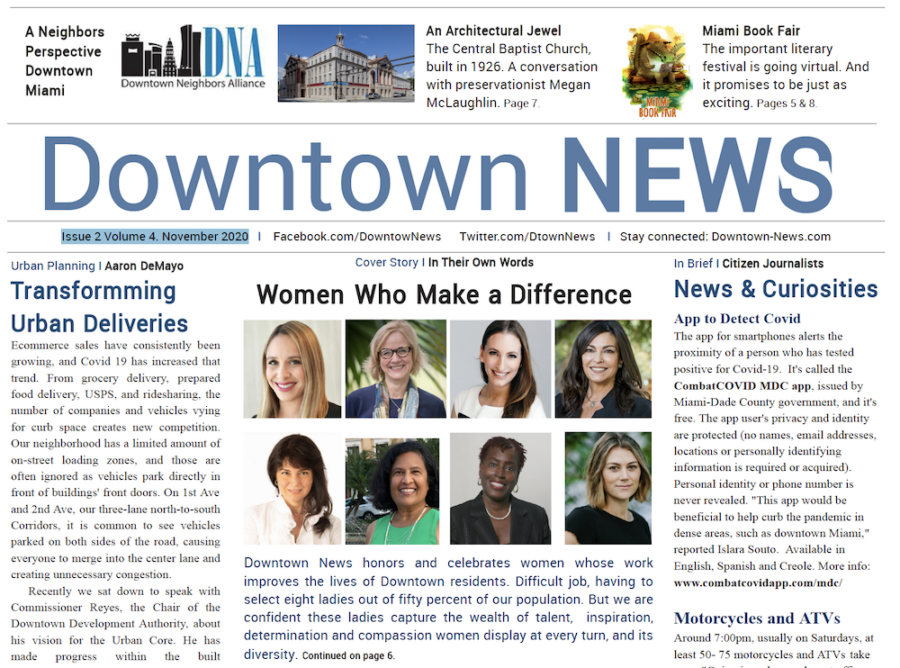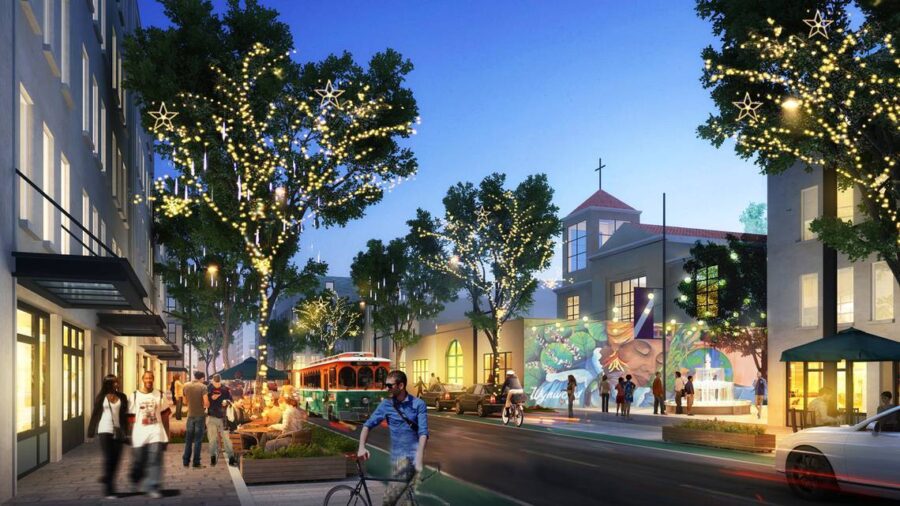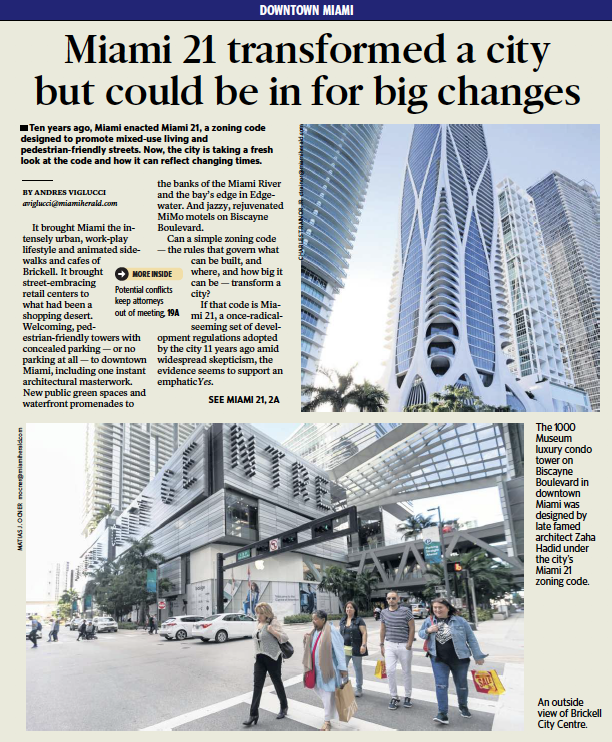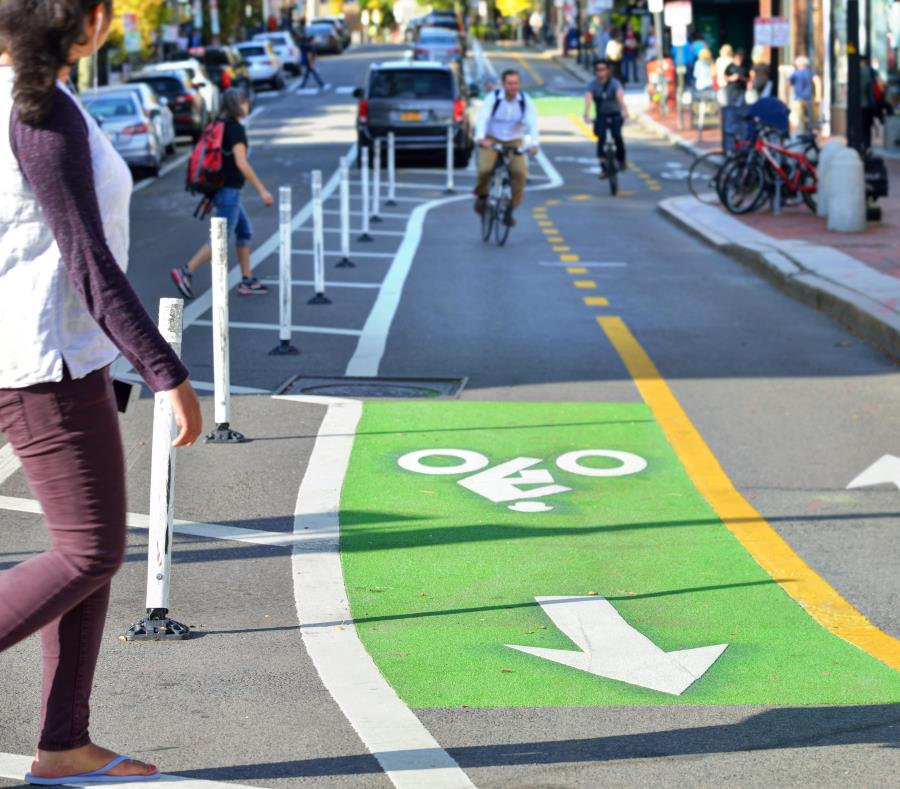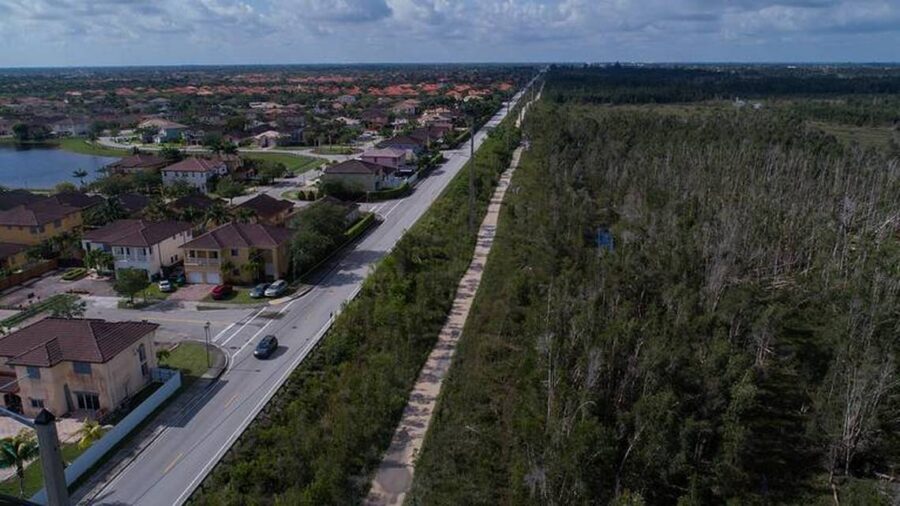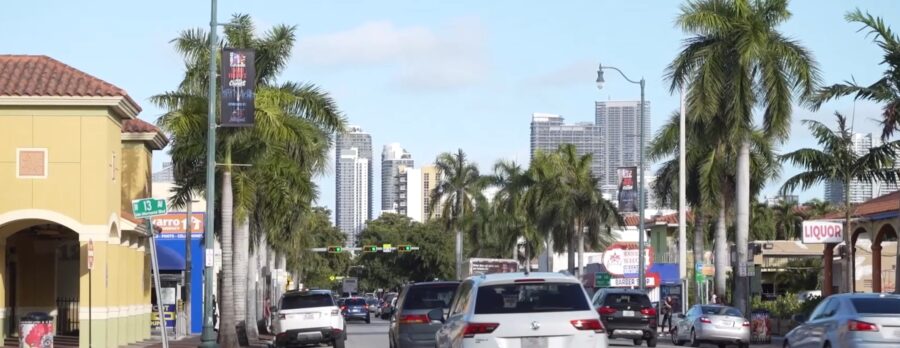our
news
AWARDS, ACCOLADES, PUBLICATIONS AND NEWS.
const canvas = document.getElementById('snowCanvas');
const ctx = canvas.getContext('2d');function resizeCanvas() {
canvas.width = window.innerWidth;
canvas.height = window.innerHeight;
}
window.addEventListener('resize', resizeCanvas);
resizeCanvas();const flakes = [];
const flakeCount = 80; // number of snowflakes
for (let i = 0; i < flakeCount; i++) {
flakes.push({
x: Math.random() * canvas.width,
y: Math.random() * canvas.height,
r: Math.random() * 4 + 1, // radius
d: Math.random() * flakeCount
});
}function drawFlakes() {
ctx.clearRect(0, 0, canvas.width, canvas.height);
ctx.fillStyle = 'white';
ctx.beginPath();
for (let i = 0; i < flakes.length; i++) {
const f = flakes[i];
ctx.moveTo(f.x, f.y);
ctx.arc(f.x, f.y, f.r, 0, Math.PI * 2, true);
}
ctx.fill();
moveFlakes();
}let angle = 0;
function moveFlakes() {
angle += 0.01;
for (let i = 0; i < flakes.length; i++) { const f = flakes[i]; f.y += Math.pow(f.d, 0.5) + 1; f.x += Math.sin(angle) * 2; if (f.y > canvas.height) {
f.y = 0;
f.x = Math.random() * canvas.width;
}
}
}setInterval(drawFlakes, 30);
Plusurbia’s Megan McLaughlin and Juan Mullerat recently spoke with WLRN Public Media reporter Sherrilyn Cabrera about ten years of people-first design in Little Havana. From celebrating neighborhood successes to identifying opportunities for safer, more vibrant streets, they shared how collaborative, place-driven planning shapes a resilient and inclusive future.
“At Plusurbia, design begins and ends with people,” McLaughlin and Mullerat explain. By listening closely, understanding a community’s DNA, and translating ideas into actionable plans, Plusurbia creates spaces that honor cultural legacy while anticipating tomorrow’s challenges.The full interview will air in 2026. Stay tuned to learn more about how Plusurbia is helping shape Little Havana’s streets and public spaces for everyone who calls it home.
Sharing highlights from the Miami Book Fair on November 23, where Juan Mullerat, Principal of Plusurbia Design, joined the distinguished panel, “Cities, Mobility, and a Vision for a Better America.”
Presented by the Citizens' Independent Transportation Trust, the session brought together leading voices in urbanism: Angie Schmitt, Wes Marshall, Juan Mullerat, and Charles “Chuck” Bohl, with Victor Dover, FAICP, serving as moderator. The panel delivered an insightful and forward-looking conversation on the future of cities, mobility, and community-centered development.
During the program, Juan also presented his new book, The Urban Calendar: 365 Days That Shaped the Urban World, a collection of significant moments in urban history that continue to influence how cities grow, adapt, and thrive.A recording of the full session is available for viewing here:
Plusurbia founder Juan Mullerat was recently featured in Authority Magazine’s Cities of the Future series, discussing how walkable streets, active public spaces, and people-centered design contribute to more livable, productive, and sustainable cities.
In the Q&A, Juan reflects on the early influences that shaped his approach to urbanism, the importance of understanding a community’s DNA, and why collaboration and persistence are essential for meaningful, long-term change. He also highlights emerging Plusurbia tools, including LATTICE and THIRDPLACE, and shares insights on the evolving role of transit, multimodal mobility, and policies that help cities grow with intention and care.
Thank you to Yitzi Weiner for this illuminating feature.
Read the full story here.
Adopted in 2010, Miami 21 was the first form-based zoning code applied to a large U.S. city. It replaced outdated, car-centric regulations with a framework prioritizing walkability, mixed-use development, and cohesive neighborhood design. Miami 21 has since become a reference point for cities across the country exploring New Urbanism principles to guide growth in the 21st century.
Juan Mullerat, Principal of Plusurbia, has long championed zoning as a tool for equity, resilience, and livability. joined a distinguished panel with Lizz Plater-Zyberk, Code author David Snow, City of Miami's Planning Director, and Melissa Tapanes Llahues, Land Use Attorney, to reflect on Miami 21’s legacy, its evolving role in shaping the built environment, and what’s next for cities embracing form-based codes.
The discussion examined how Miami 21 has influenced urban design, transportation, housing, and public spaces over the past 15 years, while also looking ahead to the evolving needs of a dynamic and growing city.
Watch the full panel discussion here:
On June 10, 2025, the Hialeah City Council unanimously adopted the Hialeah 2050 Master Plan, marking a major milestone for one of South Florida’s most vibrant and evolving cities. The planning process, coordinated by Plusurbia in collaboration with the city and partners, guided the development of this transformative, long-range vision.Built over nearly two years of collaboration and community engagement, the plan reflects the voices of residents, stakeholders, and local partners. Grounded in equity, connectivity, walkability, and economic opportunity, the Hialeah 2050 Master Plan provides a community-first roadmap to guide the city’s growth through 2050 while fostering neighborhood pride and enhancing the quality of life for all residents.We extend our gratitude to the City of Hialeah Municipal Government and to Debora Storch and Claudia Hasbun, AICP, for their leadership and trust throughout this process. We also thank our exceptional project team, including Urbe Studio, EXP, Corradino, and CÚRE & PENABAD, whose expertise helped bring this vision to life.Finally, thank you to all residents, stakeholders, and partners who contributed their voices, ideas, and energy to shape this plan. Together, we are building Hialeah’s future.Explore the full plan at: www.hialeah2050.com
Plusurbia recently joined ULI Southeast Florida/Caribbean for the Technical Advisory Board Meeting in Hallandale, contributing to discussions on complex land use and development challenges.
Article was originally published in the Coconut Grove Spotlight
September 3rd, 2024 When my son gets hurt, I console him with the phrase “sana, sana, colita de rana,” which loosely translates to "heal, heal, little frog's tail." It makes no real sense, but it always makes him feel better. However, when he’s genuinely injured, we seek professional help.Similarly, the "Live Local Act" (SB102) bill, enacted with minimal input from city planners and architects, seeks to address Florida's housing crisis with good intentions but without professional precision and foresight. This law will reshape our cities by streamlining development and promoting higher-density housing in commercial and industrial areas without the expert insight to understand its impact on our communities and the essential services required for healthy urban strategic growth. It’s akin to saying, “Sana, sana, SB102 de rana,” hoping the housing crisis will be resolved without side effects.When tackling affordability, it is vital to prioritize healthy strategic growth. The bill’s authors, though knowledgeable about zoning, would have benefited from a deeper understanding of how cities function, their unique qualities, histories, and diverse characters. However, with 411 municipalities and over 10,000 neighborhoods in Florida, who could cater to the specific needs of each one? No one can, and that’s why a blanket approach to affordability is ill-conceived.Height and density aren't suitable everywhere. SB102 neglects resilient measures by promoting large-scale development in vulnerable coastal and flood-prone areas. It neglects essential infrastructure like roads, emergency services, schools, and parks—elements covered in Comprehensive Plans to guide strategic growth and ensure livability. Placing housing indiscriminately in commercial and industrial zones risks overwhelming infrastructure, worsening congestion, and straining utilities. Without careful planning and provision of these services, new affordable developments will be built in the wrong places without proper services, amplifying the issues SB102 aims to resolve.A critical flaw in SB102 is assuming that density requires height. Florida’s 1920s and 30s small-scale apartments show that small, high-density buildings exist compatibly within neighborhoods. With limited parking and minimal amenities, these buildings have low HOAs and construction costs and maintain affordable rents. For instance, Miami's 1920s central corridor buildings, like 2401 Overbrook St in Coconut Grove, achieve 60-150 dwelling units per acre with just 2-3 stories, blending seamlessly into the urban fabric. Options like ADUs, triplexes, and courtyard apartments further enhance neighborhood diversity and housing availability. This doesn’t mean less housing, but more integrated rather than concentrated in towering structures. Instead of SB102’s ‘super-size-it’ approach, efficient, quality affordable housing works better when introduced strategically throughout a community.By prioritizing maximum heights and large-scale developments, SB102 overlooks the diverse housing types that have historically made our neighborhoods vibrant and inclusive. These housing types offer various densities while maintaining a harmonious scale, ensuring that buildings complement rather than overshadow each other. The bill needs to provide solutions that address affordability while preserving neighborhood character. Large-scale developments often require extensive land assemblies, encouraging land banking, speculation, and displacement of existing residents and businesses, ultimately exacerbating the problems the law aims to solve—particularly in hyperinflated markets—undermining the character and scale of established neighborhoods.While the legislation encourages development near transit by reducing parking requirements, it must prioritize it. This is an opportunity to encourage growth around transportation nodes and corridors, gradually decreasing height to match the existing neighborhoods’ character with smaller, scaled-down infill projects that blend seamlessly into the urban fabric. Such a strategy would preserve the character of lower-rise areas, contributing to balanced growth and maintaining community integrity while accommodating new residents to support public transit. This approach would reduce congestion and promote sustainable transit-supportive environments, motivating cities to enhance transportation options and reducing car dependency and the need for onerous parking mandates.The law must seriously address the impact of parking on housing affordability. Mandating parking on any new development imposes significant financial burdens, driving up the cost of housing and making units less affordable. While parking may be desirable, especially in areas with limited public transit, existing stringent parking requirements increase development costs and exacerbate affordability issues. Parking should be optional, not mandatory. Numerous cities nationwide are eliminating parking minimums. Although not all cities may be ready for this, SB102 should require parking exemptions, at least in all TOD areas within half a mile, allowing the market to determine parking needs and compelling cities to invest in alternative mobility solutions. Parking should be considered an amenity, not a requirement, as the cost of structured parking—averaging $30,000 per space (or $60,000 if two spaces are required)—inevitably results in higher housing prices.A more profound issue lies in how 'affordable' is calculated. The current method using Area Median Income (AMI) is too broad and often fails to reflect real household economics, particularly in gentrifying or economically diverse neighborhoods where wealthier newcomers skew the median income. As a result, the 'affordable' units created under this legislation are often still out of reach. For example, in Miami-Dade, 'affordable' rents at 120% AMI are set at $2,554 for a one-bedroom and $3,063 for a two-bedroom unit. To afford this under HUD guidelines—where housing costs should be no more than 30% of income—a family of three would need to earn $122,520 annually, far above the county's median income of $79,400 and even more unrealistic in areas like the West Grove, at $50,000. Without a more precise approach considering local economic conditions, the housing produced under SB102 will remain inaccessible to those who truly need it, creating low-end market units rather than genuine affordable housing.Localized income assessments would ensure more realistic AMIs to achieve true affordability. The current thresholds could exacerbate displacement, pushing existing residents out of their communities. A fairer, more calibrated AMI and access to essential services like schools, parks, and transportation are crucial for creating sustainable and equitable housing solutions. Without these adjustments, SB102 risks perpetuating the housing crisis and worsening inequality.The law has sparked concerns among urban planners and local governments by overriding zoning laws and imposing a one-size-fits-all approach that disregards the unique needs of individual communities. This preemption limits local authorities' ability to develop strategies that align with their strategic growth plans, neighborhoods' character, and historical context, creating tension between state and local objectives.Much like the issues that led to the 1776 Declaration of Independence, where the 'consent of the governed' was crucial, this top-down approach from Tallahassee highlights a significant disconnect. Lawmakers in the state capital are not and cannot be attuned to the nuances of life in every community, much less in South Florida. Given the distinct challenges and opportunities here, perhaps it’s time to consider whether South Florida requires more autonomy to ensure that development policies are crafted with a deep understanding of our region’s unique context and needs.
By Andres Viglucci
June 22, 2024 5:00 AMMiami’s Wynwood may be the hottest, hippest neighborhood in America’s hottest city: A dynamic urban fusion of repurposed industrial buildings and warehouses interspersed with new, low-rise buildings housing shops, bars and restaurants, offices and apartments, all of it steeped in artful design and curated graffiti murals. Its success is no accident. The reinvigorated Wynwood, once a derelict industrial zone, is the deliberate result of unique planning guidelines and development limits painstakingly laid out a decade ago by district property owners and city of Miami planners. The special Wynwood regulations are backed by a distinct vision — for a dense yet human-scaled alternative to the new high-rise forests of Brickell and Edgewater. But just as they begin to bear fruit, the carefully laid plans for Wynwood are threatened by a controversial new state law, the Live Local Act, which overrides local building controls and encourages developers to supersize projects in exchange for setting aside apartments as ostensibly affordable housing. Critics say Live Local is a giveaway to developers and the promised affordable housing is anything but that.Read more at: https://www.miamiherald.com/news/local/community/miami-dade/article289287445.html#storylink=cpy
Dade Heritage Trust (DHT) proudly announces the launch of its new podcast, "Miami Preserves." This podcast, produced in collaboration with DHT’s Historic Places, Green Spaces education program, delves into the rich tapestry of Black history in Miami. Through captivating interviews and archival recordings, "Miami Preserves" illuminates the stories, struggles, and achievements of the African American community in this vibrant city.Inaugural Episode and Series LaunchThe inaugural episode features our very own Historical Preservation Specialist, Megan Mclaughlin. Listen to this insightful discussion on America's African American history, kicking off a content-rich four-part series. The trailer for this eagerly anticipated series has already been released, generating excitement for the first episode, which will be available on all major podcast platforms starting June 26, 2024.Listen and SubscribeListeners can access the trailer and subscribe to "Miami Preserves" here. This series aims to celebrate Miami’s African American cultural heritage, preserving and honoring the community's significant contributions to the city’s history and identity.Join the JourneyJoin DHT on this compelling journey as "Miami Preserves" brings to life the stories that have shaped the African American experience in Miami. Don't miss this unique opportunity to connect with the past and celebrate the vibrant cultural heritage that continues to enrich the city.
The Puerto Rican government is making strides in preserving its rich rail heritage with the introduction of House Bill (PC 2141). Filed by five representatives, this bill seeks to enshrine the preservation of 19th and 20th-century railroad routes as public policy. It also directs government entities to create a non-motorized transportation route for historical, cultural, and ecological tourism, proposing the development of the Borinquen Trail.Historical SignificancePC 2141 highlights that by the late 19th century, Puerto Rico boasted approximately 1,000 kilometers of railroads, positioning it as one of the regions with the most extensive railroad networks per square kilometer. These railroads were integral to the island’s development and historical landscape.Efforts by Plusurbia DesignPlusurbia Design has been working to preserve this legacy since 2018. The Borinquen Trail encompasses a 426-mile corridor aimed at safeguarding the historical importance of Puerto Rico’s old train tracks. This initiative seeks to enhance the island’s cultural heritage, support sustainable tourism, and engage the community.The Borinquen Trail: A Vision for the FutureThe Borinquen Trail will feature a multimodal ecological route designed for biking and pedestrian use, traversing the Puerto Rican archipelago. It will link various natural, historical, cultural, tourist, and gastronomic attractions along the old rail routes. This pioneering project promotes health, stimulates economic and tourist activity, and fosters a vibrant cycling and pedestrian community, all while preserving and celebrating Puerto Rico’s natural, historical, and cultural heritage.
On May 8 and 9, 2024, Miami hosted an insightful walkshop titled "Metamorphosis of a District: How the Design District, Midtown, and Wynwood Emerged as Miami's Preeminent Revitalization Experiments." This event, held as part of the National Association of City Transportation Officials (NACTO) Conference, was co-led by urban planning experts Juan Mullerat, Graham Jones from the City of Miami, and Cesar Garcia-Pons of Garcia+Pons and Associates, LLC.
In a captivating session titled "Reimagining Greenville's Gateway: A Community-initiated Plan," urban design firm Plusurbia took center stage at the South Carolina APA Fall Conference. The event, held at the Westin Hilton Head Island Resort & Spa, featured Plusurbia's Juan Mullerat and Dylan Gehring, alongside key collaborators: Greenville’s City Manager, Shannon Lavrin, and local business owner and stakeholder Robert Donovan.The focal point of the session was the groundbreaking 2022 project, the "East Gateway District," a transformative initiative aimed at revitalizing Greenville's Gateway Area. The Community Vision Plan, presented by the Plusurbia team, emerged as a strategic blueprint that embraces the neighborhood's unique assets while implementing innovative strategies to seamlessly reconnect the built environment with the adjacent downtown.Revitalization began with the City’s downtown, and in the decades since, has grown outward from there in every direction; that is, except for the Gateway Area. Instead, Greenville’s most popular entrance, seeing 54,000 vehicles move through it daily, has continued to be defined by a series of disconnected development patterns, and includes a National Register-listed Historic Neighborhood, the City’s Arena, and the County’s Law Enforcement Center.Out of this, grew a community movement to plan for the area’s future, featuring a multimodal corridor, an entertainment district, and context-sensitive infill development, solidifying the connections between this new node and downtown.Plusurbia is grateful for the large turnout and exceptional questions, helping illustrate how the privately led collaboration with the City made this project different, and the key timeliness of completing the plan before the adoption of Greenville’s new development code.
Tactical urbanism is part of the toolkit communities have to transform their streets, fostering innovation, awareness of pedestrians and micro-mobility on the road, and community belonging. Tactical urbanism revitalizes neglected spaces by empowering citizens to reshape their surroundings with small-scale, quick interventions. It cultivates a powerful civic pride, driving positive social change and sustainable development.At Plusurbia, we believe that tactical interventions can lead to long-term change. Establishing a long-term vision is critical before Tactical Urbanism interventions are considered. We work with our clients to create roadmaps that address communities' needs and create lasting change. Exercises such as mobility master planning, corridor studies, and comprehensive planning, are critical steps in generating the long term vision for mobility in any given city or township.Comprehensive and mobility planning are a careful balance between enhancing the existing public realm while anticipating future development needs. We combine best practices in complete streets design with local knowledge of network planning. As such, site visits and community outreach are core to the process of generating viable solutions that work for everyone. A successful study takes care to look beyond crash data analysis, towards travel patterns and safety audits to identify community needs that match community desires and support economic development.These planning strategies generate high-level recommendations, such as corridor selection and prioritization, necessary for the funding, design, and construction phases of projects. In addition, long-term visions are key to define objectives that lead to short-term implementations, such as pilot projects. This is where tactical urbanism is key, by creating projects that are implementable in a short period of time, which is key to demonstrate progress. This is why we are using tactical urbanism to advance the Borinquen Trail, an island-wide trail network for Puerto Rico.Tactical urbanism facilitates practitioners and governments, along with communities, to partner on advancing the implementation of soft treatments, such as pedestrian crosswalks, bicycle route symbols on pavements, and signage that will be the base for a future street improvements through reconstruction. Most of all, it is empowering to communities that wish to support safety advocacy efforts, and this empowerment leads to public policy success as communities adopt a culture of safe driving, rolling, and walking. As an added bonus, communities may adopt these tools as a means to continue the conversation beyond pilot projects, and these desires can be supported by governments through street improvement permitting and adopt-a-street initiatives.
Lake Wales Main Street was among winners of 2023 Florida Main Street Awards, which were announced during the Preservation on Main Street Conference in Ocala last week.Florida Main Street is a program administered by the Division of Historical Resources under the Florida Department of State, which currently oversees 57 communities throughout the state. By implementing the National Main Street Center's Four-Point Approach, Florida Main Street encourages economic development within the context of historic preservation through the revitalization of Florida's downtowns, cultural and heritage districts, which it describes as "the community's heart and soul."Lake Wales won a "Distinctive Preservation Award" in recognition of downtown mixed-use design standards in Category A. Those standards were recently adopted by the City of Lake Wales, and are intended to protect the historic designs of the downtown district while encouraging residential and new commercial uses that will reflect that history. The new standards were among recommendations contained in the Lake Wales Connected plan that have been adopted by the city commission.A variety of awards were given to programs across the state in recognition of individuals and projects ranging from single landmark building preservation to special events.Florida Secretary of State Cord Byrd was at the ceremony to present awards to this year's winners who achieved outstanding results in historic preservation and commercial activity through the Florida Main Street program."This year's winners have shown a remarkable commitment to preserving the distinct heritage, traditions, and culture that make their historic downtowns attractive places for commerce," said Secretary Byrd. "The Department of State is proud to showcase these success stories in the preservation and revitalization of Florida's historic downtowns."
On Celebrate Trails Day (this Saturday, April 22), Rails-to-Trails Conservancy (RTC), the largest U.S.-based trails advocacy organization, showcases the impact of trails and trail systems on people, places and the planet by encouraging everyone to get outside on trails.Joining this year's celebration is the Borinquen Trail in Puerto Rico as part of its partnership with RTC. In addition, Borinquen Trail will collaborate with RTC on technical assistance initiatives and advocate for funding sources and best practices in trail implementation. Since 1992, RTC has helped advocate for more than $20 billion in funds to support more than 40,000 trail and active transportation projects throughout the nation.The Borinquen Trail is a 600-mile multi-use trail for walking and bicycling, endorsed by RTC. The trail repurposes former railroad right-of-way encircling the island, including breathtaking beachfront and historic tunnel segments. The route will connect 22 municipalities and, once fully implemented, could generate up to $673 million in annual user spending through direct, indirect, and induced economic effects. Adding to this sum will be the growth and creation of businesses associated with the outdoor recreation industry, including restaurants, sports equipment and bicycle rental establishments, history and tourism groups, hotels, and more. The trail could support between 4,708 and 7,294 jobs and is expected to spur an annual $21-41 million in new island and federal tax income.The implementation of the Borinquen Trail has already begun, a critical step in the island’s journey to a more sustainable environmental, and resilient future. Last month, planning for the Borinquen’s pilot project in Playa de Ponce (in the south of the island) was completed, and new local partners are joining to drive construction and designation of the trail. When finished, it will establish a multimodal connection between two historic centers: Playa de Ponce and the municipality’s town core.The Borinquen Trail has the potential to significantly increase tourism island-wide, create thousands of jobs, and improve public health across Puerto Rico. With the rail-trail already in motion, there is much to look forward to as its route unfolds over the coming years. To learn more and support this effort, visit https://www.rutaborinquen.org.Celebrate Trails Day is the annual celebration of the spring trail season, recognized on the fourth Saturday in April. The national celebration is organized by RTC, the largest U.S.-based trails organization—with a grassroots community more than 1 million strong. RTC is dedicated to building a nation connected by trails, reimagining public spaces to create safe ways for everyone to walk, bike and be active outdoors. Follow #CelebrateTrails on social media for updates, and connect with RTC at railstotrails.org and @railstotrails on Facebook, Twitter and Instagram.
INTERVIEW: Juan Mullerat
Date: 20230315
Can you share more about Plusurbia and the kinds of projects your team focuses on?
At Plusurbia, we focus on making cities better places to live and work by improving walkability, affordability, and context. Our projects range from creating walkable neighborhoods with a mix of housing types to creating inclusive public spaces that can be enjoyed by people of all ages and backgrounds. We also specialize in leveraging data to create targeted solutions for communities facing gentrification and displacement, such as developing tools to help assess the potential effects of development decisions on existing residents.Our firm has always balanced private, public, and pro-bono projects. We work for municipalities or the state, we work with private developers and property owners, and then, this is the exciting side of our studio: we get involved with non-profits or communities with limited or no budgets to help them improve their neighborhoods. We are currently involved in Ruta Borinquen, a not-for-profit effort to revitalize communities along a 426-mile stretch of the former railway in Puerto Rico. We are designing and implementing pocket parks in various neighborhoods, and we are working with some communities experiencing very aggressive displacement.Our team is committed to engaging local stakeholders throughout the planning and implementation process so that all voices are heard and community vision prevails. Ultimately, we aim to ensure that all communities become safe and accessible places with robust amenities and the tools to improve lives.
Gentrification and climate change are both at the forefront of planning. However, the combination of the two, climate gentrification, is still a fairly new term and a concept we're just now trying to wrap our minds around.
For our listeners, can you explain what climate gentrification means and give examples of how you've seen it play out in Miami or other cities?
The Next Miami: Article
December 22, 2022Renderings have been released for Upland Park, a $1b transit-oriented development planned near the Dolphin Mall.
The development will be “the first truly viable alternative to automobile commuting,”. Upland Park is being purpose-built for integration with the upcoming east-west transit corridor, according to the developer. The community will have expedited access to major employment areas such as Miami International Airport, the Health District, Downtown and Brickell, the developer says. The project site itself is at the planned Dolphin rapid transit station. [caption id="attachment_27290" align="aligncenter" width="1290"] A rendering released by Miami-Dade County showing the BRT service planned on the east-west corridor of the SMART plan[/caption]Once inside the community, residents and workers will enjoy a master-planned walkable neighborhood with built-in traffic solutions, along with resiliency features. The goal is to also have a variety of residence sizes and price points within the neighborhood, catering to “all ages and audiences,” from students to seniors.
Sunbeam, controlled by the billionaire Ansin family and owner of TV station WSVN, won approval this month to build a massive walkable development in North Bay Village.As part of the approval, a construction permit must be applied for within two years.The project will include 7.3 million square feet, including 8-10 towers rising up to 650 feet, with:1,936 residential units (117 will be workforce housing units)
200,000 square foot Class A HQ office building
300-room luxury hotel with sky restaurant and observation deck (Hyatt signed a letter expressing interest in operating the hotel)
670,000 square feet of commercial, with grocery store, restaurants, entertainment, and retail
a small production studio
a state-of-the-art marina
5,000 parking spacesUniversity of Miami architecture students studied the property to help come up with a plan. The goal is to create a “15-minute city,” with essential needs within walking distance.A baywalk along the waterfront called Island Walk is planned. The developer also wants to build a pedestrian bridge across 79th street (the property spans both sides) and add a water taxi/ferry service.The developer told the SFBJ that the first phase will include two towers with 500 to 600 units, with ground floor grocery, restaurants and retail.Plusurbia is designing the project.
BY OMAR RODRÍGUEZ ORTIZ For the last six years, Florida’s transportation agency has been looking into upgrading Little Havana’s main street, Calle Ocho, to boost safety, encourage alternative transportation and open better access to the Brickell area. Among the enhancements considered, but not adopted, for Southwest Eighth and Seventh streets — two main arteries consisting of six one-way lanes connecting Little Havana and Brickell — are bus lanes, bike lanes and wider sidewalks. Instead, the conclusion of the $3 million study that began in 2016 is a plan to leave the majority of the corridor alone, while adding car-centric modifications near Interstate 95 pending further evaluation, Florida Department of Transportation officials revealed Tuesday at a public information meeting at Miami Dade College’s campus in Little Havana. Calle Ocho falls under the agency’s jurisdiction because it’s a state road.FDOT’s cars-first approach proposals include:▪ Widening the Interstate 95 southbound off-ramp at Southwest Seventh Street.▪ Providing an eastbound to northbound left turn at Southwest Eight Street and Second Avenue intersection.▪ Closing of Southwest Fourth Avenue at Seventh Street.▪ Conversion to two-way traffic at Southwest Fourth and Third avenues between Southwest Sixth and Seventh streets.But several Miami residents who attended the meeting told FDOT leaders they want bike lanes. Carolina Flores, a tour guide who lives in Little Havana, said that a protected bike lane would benefit residents and tourists who ride bicycles and electric scooters. “We should be promoting other modes of transportation,” Flores said.Eric Barton, who lives in Miami, said the plan proposed only looks to further the movement of cars while ignoring other forms of transportation, like bicycles with their own lanes.“This is a plan that perpetuates a mistake,” Barton said. “We have a neighborhood that was built on the backs of immigrants and we put a six-lane highway through the middle of it.” In a four-year span from September 2018 to Aug. 31, Miami police have responded to at least four fatal crashes in the studied area of Southwest Seventh Street, and none on Calle Ocho, according to preliminary police data. In the most recent crash, a woman crossing Southwest Seventh Street at Fifth Avenue on March 14 was struck and killed by a car.Miami City Commissioner Joe Carollo, who represents Calle Ocho and surrounding areas, told the Miami Herald on Wednesday that the city is looking into potential locations where multi-level parking structures could be built. He said the City Commission should receive a report before the end of the year. These parking lots, Carollo said, could allow the city to expand sidewalks by eliminating street parking along Calle Ocho between 12th and 18th avenues. But he said bike-only lanes wouldn’t be used enough to alleviate traffic in the area. “We aren’t China,” Carollo said in Spanish. “This bicycle thing is a nice fairy tale.”At the heart of the issue, according to planner Juan Mullerat, who lives near Calle Ocho, is FDOT’s authority to have a final say on any modifications in the corridor. He said the solution is for Miami to take control of Calle Ocho like in 2014 when the city took over a large portion of Brickell Avenue from FDOT. Officials were frustrated with the inability to lower the speed limit and cull overgrown brush and trees.Read more at: https://www.miamiherald.com/news/local/community/miami-dade/little-havana/article265102319.html#storylink=cpy
West Palm Beach will be moving in a new direction as developers begin executing on a plan to remake an industrial neighborhood north of Downtown into a food and retail hub. The district, rebranded “Nora,” spans 40 acres in the environs of North Railroad Avenue, and will include 2 million square feet of residential and office development, as well as a hotel.The redevelopment is being led by NDT Development and Place Projects, which spearheaded the reshaping of Miami’s Wynwood district. Urban planning firm PlusUrbia had a hand in creating the major design elements as Downtown expands. Wheelock Street Capital is financing the venture with a budget of up $150 million for the first phase alone, Bloomberg reported.
upstatebizSC: Article
February 24, 2022Plusurbia, the Miami-based urban design group leading the Greenville Gateway master plan project, this week unveiled a reimagined gateway into downtown. Built on community input gathered over several days, the concepts include pedestrian-friendly pathways and greenspace, restaurants, entertainment, sports, and mixed-use developments.The plan was constructed around six key principles: connect, protect, calibrate, reinvest, enhance, and collaborate.The presentation followed four days of public charrettes and open studio hours, during which residents, elected officials, business leaders, and designers gathered to submit ideas. Plusurbia compiled the input into a set of initial concepts for the area that includes East North Street, the Bon Secours Wellness Arena, the Greenville County Law Enforcement Center, Lavinia Street, East Park Avenue, and the Pettigru Historic District.The project spearheaded by DOM360’s Robert and Jennifer Donovan collected 400 survey responses in addition to the input from the charrettes’ attendees.The designers from Plusurbia will continue to collect input from stakeholders via an online survey on the project website at GatewayGreenville.com. Over the next two months, the group will work closely with the city and county to ensure Plusurbia’s recommendations dovetail with the agencies’ current work.Plusurbia will provide recommendations to the City of Greenville by May with the goal of creating a report of stakeholders’ visions and desires for the area that can help guide decision-making for the Greenville Gateway’s future.
Urban planning group Plusurbia Design revealed what the future of the Greenville Gateway could become on Tues., Oct. 18.After a series of community meetings and a survey earlier this year (which received 479 responses), the urban design group designed a future look for specific areas of the corridor, including:Bon Secours Wellness Arena
East North Street (at the end of I-385 + continuing past The Well)
Pettigru Historic DistrictSome of the most notable changes proposed include transforming East North Street with trees, bike lanes + additional apartments and shifting Bon Secours Wellness Arena’s entrance into a pedestrian-friendly entertainment hub with restaurants and outdoor space.The project, initiated by the owners of local automotive marketing agency DOM360, focuses on a specific corridor of Greenville between these streets:North Church Street
East Washington Street
Atlas Street
Sunflower Street
Richland WayFamiliar places in this area include Bon Secours Wellness Arena, Greenville’s Law Enforcement Center, and the Pettigru Historic District.Plusurbia Design will help develop and implement this vision with private + public funding, and with input from community leaders, organizations, and you.
WPTV: Article
October 27, 2021WEST PALM BEACH, Fla. — Nora is the name of a comprehensive master plan for a neighborhood in West Palm Beach located south of Palm Beach Lakes Blvd and North of Quadrille Blvd.“Nora is accretive to the smart growth of Downtown West Palm Beach,” says Ned Grace. “As a team deeply rooted in the Palm Beach area, we are witnessing a readiness and desire for a new kind of neighborhood in West Palm Beach’s urban core. The tailwind from the migration of industry leaders from around the country is adding fuel to this new demand, and Nora is the missing piece of West Palm Beach’s Downtown.”“We believe this previously overlooked area of Downtown will become a treasured gem in West Palm Beach. Our responsibility is to work thoughtfully and systematically to ensure the mix of commercial and residential offerings achieves Nora’s potential,” says Joe Furst.
Plusurbia's Andrew Georgiadis shares our experience with reforming cities through zoning reform in the prestigious urban design publication and podcast platform Somos Cidade. Read more about how we use planning instruments to achieve human-scale cities (in Portuguese) below:Já comum na realidade dos Estados Unidos, o Planned Unit Development (PUD) é visto como uma possibilidade para promover e acelerar mudanças pontuais na malha urbana de municípios do Brasil, criando espaços mais qualificados e diversificados. O instrumento é utilizado naquele país por incorporadores e desenvolvedores imobiliários para propor a modificação do zoneamento existente de lotes ou de grandes terrenos em determinados lugares.
A partir desse modelo, é possível solicitar aos governos locais alterações na legislação de uma área para o uso misto do solo, implementação de empreendimentos – como bairros planejados –, melhorias na infraestrutura de uma região e ainda para aperfeiçoar ou introduzir ambientes públicos. “O PUD é empregado para aprovar um tipo de projeto que não cabe bem no zoneamento das prefeituras”, afirmou o arquiteto Andrew Georgiadis, em entrevista ao Somos Cidade. Andrew é diretor de Projetos do escritório PlusUrbia Design, com sede em Miami (EUA), e também professor da faculdade de Arquitetura da Universidade de Miami e presidente da Georgiadis Urban Design.
To keep reading, click here.
BY JOEY FLECHAS
MARCH 26, 2021 02:47 PM, UPDATED MARCH 26, 2021 03:57 PM
A 1936 shotgun house on Charles Avenue in west Coconut Grove was one of the 50 wood-frame homes in the historically black neighborhood that had been proposed by the city of Miami for designation as a protected landmark. ANDRES VIGLUCCI MIAMI HERALDMiami commissioners on Thursday approved creation of a new taxing agency in West Coconut Grove, a historically Black neighborhood where proponents aim to spend future tax revenue on affordable housing and economic revitalization.
The commission unanimously approved creation of the West Grove Community Redevelopment Agency (CRA), a new semi-autonomous arm of the city government meant to fund anti-poverty initiatives using a portion of taxes from the area. Proponents argue that when managed correctly, CRAs can provide seed money that spurs private investment.
To continue reading, please click here.
BY ANDRES VIGLUCCIMARCH 25, 2021 07:31 PM, UPDATED MARCH 26, 2021 09:32 AM.mcclatchy-embed{position:relative;padding:40px 0 56.25%;height:0;overflow:hidden;max-width:100%}.mcclatchy-embed iframe{position:absolute;top:0;left:0;width:100%;height:100%} Residents and property owners in Wynwood's working-class residential enclave have re-branded, organized and developed a plan to cope with gentrification. BY WYNWOOD NORTEA grassroots plan aiming to save the struggling working-class neighborhood of Wynwood Norte from looming gentrification by spurring limited redevelopment won final and unanimous approval on Thursday from enthusiastic Miami commissioners, who have called it a model for other city neighborhoods besieged by real estate speculation.The 5-0 vote came five months after commissioners initially approved the Wynwood Norte Neighborhood Revitalization District, a special zoning plan seeking to corral development pressure to benefit the historic community, once a predominantly Puerto Rican residential enclave that’s been steadily losing residents and businesses for decades.To continue reading, please click here.
WLRN 91.3 FM | By Daniel RiveroPublished February 24, 2021 at 1:40 PM ESTAs developers started to acquire chunks of land in the neighborhood, it seemed that a familiar pattern was about to play out. A Miami commission vote on Thursday is set to determine the future of the neighborhood.A decade of fast-forwarded development in Wynwood has converted what used to be the partially-residential neighborhood into a bustling mix of bars, restaurants and the occasional art studio.That’s the Wynwood south of NW 29th Street.Continue reading here.
Miami commissioners are scheduled to vote this week on upzoning an area called Wynwood Norte.It is the second and final commission vote, after it unanimously passed a first reading in October. The second reading vote is scheduled for February 25.The Wynwood Norte Neighborhood Revitalization District is being created at the request of residents of the area who want to better control gentrification, according to an October article in the Herald.The plan for Wynwood Norte includes:Increasing zoning density with up to 9,000 more residential units than currently allowed (the current population of the area is around 4,000)Requiring a 10 percent set aside for affordable housing in exchange for the increased densityDevelopers would also fund shade trees, sidewalks, lighting, in addition to affordable housingForbidding demolition unless a new construction permit has been issuedRules to discourage lot assemblages, and encourage smaller scale developmentThe area encompasses 140 acres, or around 29 city blocks.Plusurbia Design created the plan. Please click here to read the full article.
The City of Miami passed the historic zoning overlay to mitigate displacement and encourage small incremental affordable development in the Wynwood Norte neighborhood in Miami. This is an important first step to keep our city resilient.To learn more about the project, please visit:Wynwood Norte[caption id="attachment_4205" align="alignleft" width="829"] A community collaboration envisions Wynwood Norte that accommodates development that is compatible with the old Miami neighborhood. PLUSURBIA DESIGN[/caption]Related articles:THE MIAMI HERALDTo fight gentrification, a working-class Miami enclave wins plan to spur developmentSOUTH FLORIDA BUSINESS JOURNALRezoning moves forward for area north of Miami's WynwoodPLANETIZENRevitalization Without Displacement: A New Model From Miami
Plusurbia's Megan McLaughlin contributed to the latest issue of Downtown News where she addressed the importance of historic preservation and more specifically, her work in preserving the grand Central Baptist Church on NE First Avenue.Issue 2 Volume 4. November 2020Historic Preservation I Raul GuerreroMiami has great historic buildings. One is the Central Baptist Church which parallels the very history of Miami. Built in 1926 in neoclassical grandeur by the Memphis firm of Dougherty and Gardner, it has undergone a complete rehabilitation, explained preservationist Megan McLaughlin of PlusUrbia, who serves as adviser and liaison for permitting with the city. Given that she is an expert in historic preservation, we start by addressing characteristics of downtown historic architecture?Megan McLaughlin: Buildings from the 1920s are distinctive because they are very large. There was such a boom going on in the 1920s. Miami buildings were taller, more robust, than those in Palm Beach, Orlando and other municipalities in Florida. Because of the nature of architecture in that period, and up to the 1960s, buildings were more humane, designed for people to inhabit them, to experience them..."Older buildings were more about the human experience."Downtown News: You mean today’s buildings aren’t as humane?MM: Yes. Today they build with a different audience in mind. They have other requirements, which might not be so much human interaction. They have to house a lot of cars and that changes the nature and feeling of the building. Sometimes they build for impressiveness, to be viewed from across the Bay or from I95. It’s almost like advertisement, not so much to experience the building as a person from the street or inside. Older buildings were more about the human experience.To continue reading and to access the digital version of the November issue of Downtown News, please click below:Downtown News November digital edition
BY CATHY LEFFSEPTEMBER 27, 2020 08:04 PM , UPDATED 11 HOURS 58 MINUTES AGO[caption id="attachment_4205" align="alignnone" width="940"] A community collaboration envisions Wynwood Norte that accommodates development that is compatible with the old Miami neighborhood. PLUSURBIA DESIGN[/caption]In September 2019, the Wynwood Community Enhancement Association (WCEA) created a Community Vision Plan for Wynwood Norte after more than a year of meetings as a community-driven, participatory initiative. Bringing together diverse familiar and new stakeholders, we were united to improve the quality of life for the neighborhood. Recognizing increasing development pressures from surrounding areas, we knew doing nothing was not an option. We sought to address existing area conditions, while envisioning our collective desire to preserve and revitalize one of Miami’s oldest and most beloved urban neighborhoods.Click here to read the rest of the article: Miami can help Wynwood Norte adapt to future growth while preserving its past | Opinion Cathy Leff is Bakehouse Art Complex acting director and member of the Board of Directors of the Wynwood Community Enhancement Association (WCEA). She wrote this on behalf of Yoni Bornstein, WCEA president, and board members Asi Cymbal, Arnold Melgar, Robin Vasquez, Wil Vasquez and Julie Williamson.
BY ANDRES VIGLUCCIJUNE 14, 2020 06:00 AM [caption id="attachment_4104" align="alignnone" width="960"] An outside view of Brickell City Centre in Miami, Florida on Tuesday, January 7, 2020. MATIAS J. OCNER MOCNER@MIAMIHERALD.COM[/caption]It brought Miami the intensely urban, work-play lifestyle and animated sidewalks and cafes of Brickell. It brought street-embracing retail centers to what had been a shopping desert. Welcoming, pedestrian-friendly towers with concealed parking — or no parking at all — to downtown Miami, including one instant architectural masterwork. New public green spaces and waterfront promenades to the banks of the Miami River and the bay’s edge in Edgewater. And jazzy, rejuvenated MiMo motels on Biscayne Boulevard.Can a simple zoning code — the rules that govern what can be built, and where, and how big it can be — transform a city?If that code is Miami 21, a once-radical-seeming set of development regulations adopted by the city 11 years ago amid widespread skepticism, the evidence seems to support an emphatic Yes.Now, just over a decade on, the city is undertaking a fresh look at Miami 21. This week, after a five-month delay caused by the COVID-19 pandemic, the city formally launched a special task force of experts and residents charged with substantially revising the code and tackling new goals that weren’t on the front burner when it was enacted in 2009.Chief among those: Finding ways to promote development of critically needed affordable housing, figuring out new rules for developing projects to meet sea-level rise, reviewing the adequacy of existing zoning for specific city neighborhoods, and addressing issues of equity and gentrification that Miami 21 may have inadvertently helped fuel.Almost certainly, the task force’s 12 members — a mix of architects and planners, developers, land-use lawyers and residents — will wrestle with how, or whether, to limit the massive and sometimes controversial Miami 21 Special Area Plan projects that have become flashpoints of community opposition.Although the city’s planning board last year called for doing away with the so-called SAPs entirely, city officials want to refine them. Experts say that could be done by increasing community participation while curbing density or building heights to ensure the projects are compatible with surrounding neighborhoods.[caption id="attachment_4106" align="alignnone" width="960"] A Starbucks on the ground floor of a residential building in Miami’s Brickell neighborhood opens directly to the sidewalk in pedestrian-friendly fashion under a template set by the city’s 10-year-old Miami 21 zoning code. CHARLES TRAINOR JR CTRAINOR@MIAMIHERALD.COM[/caption]SAPs have won both praise and scorn.The SAP section of Miami 21 was intended to sensitively guide large-scale development on at least nine acres through negotiations between developers and city planners. It led to the creation of the Brickell City Centre, the shopping, hotel, office and residential complex on several blocks of long-vacant land on the south side of the Miami River. It also allowed the transformation of the once-forlorn Miami Design District into an uber-luxury, pedestrian-friendly urban shopping and cultural district. But distressed, low-income Little Haiti could end up sandwiched in between two mammoth, not-yet-built SAP developments that have already been blamed for rampant land speculation, rising residential rents and small-business evictions in the neighborhood.Although the Miami 21 code has been amended several times, the city has not conducted the sort of thorough assessment that its designers at the Miami planning firm Duany Plater-Zyberk envisioned would occur every few years to adapt to a changing world.“The city has evolved tremendously since the inception of Miami 21,” Miami City Manager Art Noriega told the task force during the inaugural meeting, which was conducted virtually. “This is something we probably should have started some time back.”Under a resolution adopted by the Miami commission, the task force will meet at least monthly and issue a report with recommended revisions or additions by December to city commissioners.The questions the task force should explore, say its members and Miami 21 principal author Elizabeth Plater-Zyberk, take on added dimensions in the ongoing COVID-19 pandemic.One consideration: should the prospect of subsequent waves of infection or new epidemics justify requirements for greater setbacks and open space at the street level around buildings? That requirement would allow for maximum air circulation and space for social distancing, including separated cafe tables and wider sidewalks, they said.Another factor: Will decreased use of formal offices, or a greater need for working from home, produce a greater need for live-work housing that combines residential space with businesses or office space?Even questions over the continued desirability of increased urban density to foster city life should be on the table after coronavirus spread rapidly in close urban quarters like New York City, they say.“Wider sidewalks and fewer or narrower traffic lanes, wellness and equity questions, and rethinking of public space — the amount of it, the dimensions of it — would certainly be appropriate in light of world health,” said Plater-Zyberk. She stressed she has not kept up with the code’s use closely and is not involved in the revision effort.When it comes to affordable housing, there’s only so much a zoning code can do to spur affordable housing short of requiring it — something elected officials have resisted and may now be barred by a new state statute, experts say. Plater-Zyberk said Miami 21 could nonetheless provide greater incentives than it does now to developers. It could offer more capacity to build in exchange for strict commitments to including affordable or workforce housing in projects — though she warned those must be carefully calibrated.But she said Miami 21’s basic precepts have more than proven themselves.To promote walkability, activity and good urban design, the code bars visible parking or loading areas, requiring those be concealed behind screens or “liners” consisting of apartments, offices and shops. It requires “habitable space” at street level and lots of clear glass at sidewalk level, plus working doors and entryways, to make walking easy and alluring.The best SAPs, meanwhile, allowed developers and planners flexibility to arrange new buildings in innovative, cohesive ways that a strict adherence to Miami 21 would not permit. But Plater-Zyberk said city planners may have interpreted some SAP rules too liberally.One goal of SAPs is to allow planners and developers to depart from Miami 21 rules to amass density and height in sections of the property to create variety and open spaces across the site. Instead, at times, developers were allowed to increase density across the board in exchange for providing open spaces and other public benefits, she said.That could be fixed with a tweak of the rules, she said.[caption id="attachment_4103" align="alignnone" width="960"] Visitors stroll along Paseo Ponti on the reopening day of the Miami Design District on Wednesday, May 20. MIAMI DESIGN DISTRICT[/caption]“We got some special places out of that,” said Plater-Zyberk, whose firm drew up the master plan for the revamped Design District. “And then, I think, the fact that so many of the big buildings have been built with doors and windows at the street level instead of parking garages was important.”LONG DEBATEMiami 21, proposed in 2005 by then-Miami Mayor Manny Diaz, was shaped through years of intense public meetings, contested hearings and some determined opposition. It finally was approved by the Miami commission in 2009, just as development ground to a virtual halt amid a deep world recession.The new code represented a sharp departure from its predecessor, which strictly separated uses like housing, office and commercial — a suburban concept that critics say led to dead streets, a dying downtown and commercial districts without the foot traffic necessary to sustain them. It also produced jarring contrasts like massive parking garages, ramps and blank walls on important streets, and towers looming over single family homes. The complex and often ambiguous rules also lent themselves to manipulation by developers and their attorneys, critics charged.When construction finally restarted post-Recession with a vengeance, it was on the new, urban template of Miami 21. It’s been in place during one of the most extensive and long-lasting waves of development in city history.A variant of what’s known as a form-based code, Miami 21 regulates the shape of buildings and how they meet the street to create lively urban places through clear diagrams. The code won awards and attention across the country. Some other cities adopted similar strategies, most notably Denver, today widely regarded as another example of a revitalized pedestrian-friendly urban center.A key advance wrought by Miami 21 was its fostering of mixed uses within a single building or project in dense urban areas. Unlike the strict separation under the old model that requires driving from one place to the other, mixing uses puts living, working, shopping and recreation all within a close, walkable environment.That Miami 21 model helped transform Brickell from a district of sterile sidewalks to a magnet for young professionals, cafes and restaurants and workplaces that would have been difficult, if not illegal, to achieve under the previous code. Once rundown areas such as Edgewater and Biscayne Boulevard were overhauled through redevelopment on the Miami 21 template into sought-after neighborhoods.“People started noticing right away the fact that streets were becoming nicer,” Plater-Zyberk recalled. “I think there are a lot of obvious good impacts, from the low-rise bank on the corner that before would have put a parking lot out in front, to a more pedestrian-friendly streetscape.”Planning consultant and urban designer Juan Mullerat, a member of the current Miami 21 task force, said much of the code’s success lay in advancing sophisticated goals in simple terms.“It’s created better walkable human architecture. It has been able to humanize the public realm,” Mullerat, who worked for a year at Plater-Zyberk’s firm while the code was being developed, said. “The biggest strength of Miami 21 is its ability to put in simple terms some very complicated planning concepts. At the end of the day, it’s an approachable code.”Miami 21 also embraced some innovative ideas. It promotes preservation of historic buildings and places by allowing their owners to sell unused building rights to developers in high-density districts like Edgewater or Brickell, while plowing the proceeds into renovations. That transfer of development rights program gave new life to the iconic Vagabond and other historic motels in the MiMo district along Biscayne Boulevard in the city’s Upper East Side.[caption id="attachment_4107" align="alignnone" width="960"] The renovated Vagabond Motel is now open for guests. CARL JUSTE MIAMI HERALD STAFF[/caption]It also allows developers of residential buildings near transit stations to reduce parking on site, or eschew it completely, to reduce auto dependency and bolster use of public transportation.It also instituted a program of “public benefits’’ in which developers pay into city funds for affordable housing, parks and transportation improvements in exchange for “bonus” capacity to build. Plater-Zyberk said the city should assess and track benefits collected so far to see how effective the program has been as part of the Miami 21 review — and tweak the rules if necessary.One prominent condo developer, Related Group executive vice president Carlos Rosso, said Miami 21 could do more to “incentivize” builders to expand green and open spaces in and around their projects. Related was among the earliest to seize on Miami 21’s public benefits requirements, persuading the city to swap a piece of a dead-end street in Edgewater for a small public waterfront park and baywalk the developer built as part of its Icon Bay condo project.[caption id="attachment_4102" align="alignnone" width="960"] The Related Group’s Icon Bay condo tower in Miami’s Edgewater neighborhood includes a public park on Biscayne Bay built under the city’s Miami 21 zoning code. ROBIN HILL COURTESY THE RELATED GROUP[/caption]“We also opened up some additional streets, and now suddenly this park is connected to three streets,” Rosso said. “You go there in the afternoon, and it’s a small neighborhood focal point. People can meet, take their dogs, take their kids to play on the grass.”While Miami 21 strengthened requirements for developers of new projects on the bay and river to include public promenades, Rosso said it should go further to encourage creative approaches like that at Icon Bay. Related and other stakeholders have been pushing the city to fully connect the baywalk from the Design District south to Maurice Ferre Park in downtown Miami, a concept they call the Biscayne Line.The missing pieces of the long-contemplated baywalk could be completed if the code includes measures to encourage building associations and property owners to provide a connection now — perhaps using floating or suspended promenades in cases where lots are built out to the bay’s edge — even if they don’t intend to redevelop immediately. Those incentives could take the shape of credits against future fees, Rosso suggested.LESS PARKING?Echoing others, Rosso also said the task force should explore further easing minimum parking requirements, which critics say increase construction and housing costs and contribute to traffic congestion. Eliminating those requirements, though, isn’t feasible without transit improvements that a zoning code can’t mandate, he said.“We need to improve public transportation to get rid of the parking,” said Rosso, who added Related is communicating with city planners to offer input on Miami 21.The parking requirements also play into one gaping area where numerous experts and developers say Miami 21 has been ineffective: Encouraging needed, affordable and modestly scaled infill housing in neighborhoods like Little Havana. Though it’s dotted with scores of vacant lots, Miami 21 regulations make it difficult if not impossible for property owners to build the kind of small apartment buildings that could make a real dent in the city’s housing crisis, the critics say.That’s because a typical, narrow city lot can’t easily accommodate required on-site parking and car access while hewing to low-density zoning in some residential areas. As a result, critics note, very little has been built in those neighborhoods under Miami 21.“Essentially they are undevelopable,” Mullerat said.The lack of that kind of modestly scaled neighborhood development, called the “missing middle” — that is, a homey scale between high-rise projects and single family homes that’s the backbone of many traditional cities — is a national problem, experts say. That’s in part because banks and the development industry are geared to more-profitable big development, they said.But tweaking the rules to make it easier to develop those lots would spread prosperity by allowing small entrepreneurs to build, Mullerat said. What any revisions to Miami 21 must avoid, he said, is giving developers more capacity to develop without ensuring real community improvements. That’s something he said has happened in neighborhoods like Coconut Grove, where the city has allowed construction of oversized homes that erase local character and, in the case of the historically black West Grove section, push longtime residents out.“We have tools at our disposal as planners. Any change in the zoning needs to be equitable and it needs to be community driven,” Mullerat said. “A rezoning affects the surrounding property values, the living conditions and the identity of a whole neighborhood.”Some of those tensions between big development and its community impact reared up in the first task force hearing, intended as an organizational meeting.The three land-use attorneys appointed to the panel did not participate in the meeting at the suggestion of the city attorney’s office amid questions over whether their inclusion on the task force might constitute a prohibited conflict of interest under state law. All three are registered to act as lobbyists for dozens of developers seeking waivers and city zoning and development approvals under Miami 21.The city is awaiting rulings from the Miami-Dade County and Florida ethics commissions, assistant city attorney Amber Ketterer said. A complaint from a city resident triggered a Miami-Dade review, according to a June 4 email to the city from ethics commission executive director Jose Arrojo.[caption id="attachment_4105" align="alignnone" width="960"] The 1000 Museum luxury condo tower on Biscayne Boulevard in downtown Miami was designed by late famed architect Zaha Hadid under the city’s Miami 21 zoning code. CHARLES TRAINOR JR CTRAINOR@MIAMIHERALD.COM[/caption]One of the three attorneys, Iris Escarra of Greenberg Traurig, praised the code in an interview before Wednesday’s meeting for helping produce what she considers some of the finest architecture in the city’s history. She singled out the undulating 1000 Museum luxury condo tower by late famed British architect Zaha Hadid on Biscayne Boulevard in downtown Miami, which she helped shepherd to approval.“If you look at the buildings that have developed over the last 10 years under Miami 21, some have stunning architecture,” she said.“Miami 21 as a zoning code has allowed for that sort of creative architecture to come in and allow for city skyline to be enhanced. What the code has done is made everyone focus on how the building relates to its environment,” Escarra said. “The code has activated many streets that before could have been a wall with an entry, and that’s it.“It is designed and intended to engage everything around you.”To view the article on the Miami Herald page, please click here.
El uso de bicicletas y vehículos sin motor repunta como opción rápida y segura para ir de un punto a otroPor Gerardo E. Alvarado Leónsábado, 30 de mayo de 2020 - 11:40 PM[caption id="attachment_4047" align="alignnone" width="940"] Los carriles exclusivos se crearían con elementos removibles, como drones anaranjados, vallas o conos, entre otros, que separen los autos de los peatones y ciclistas. (Shutterstock.com)[/caption]A nuestra audiencia: El Nuevo Día te ofrece acceso libre de costo a su cobertura noticiosa relacionada con el COVID-19. Si quieres apoyar nuestra misión de brindarte información verdadera, pertinente y útil ahora y después de la emergencia, te exhortamos a suscribirte en suscripciones.elnuevodia.com.En momentos en que más sectores de la economía reabren y el gobierno insiste en las medidas de distanciamiento social para frenar los contagios de COVID-19, el uso de bicicletas, monopatines y vehículos no motorizados repunta como alternativa de movilidad rápida y segura, particularmente en las ciudades.Con eso en mente, la organización Muévete en Bici Puerto Rico y la firma de diseño urbano Plusurbia Design unieron esfuerzos y elaboraron recomendaciones para la movilidad urbana, que procuran –en esencia– expandir las áreas y espacios para quienes se transportan sin auto durante las distintas fases de reapertura.La propuesta principal es la designación de carriles exclusivos o ciclovías.Aunque las recomendaciones son ideales para contextos urbanos, portavoces de ambas entidades indicaron que podrían implantarse en cualquier municipio, sujeto al desarrollo de un plan de movilidad. En esa línea, resaltaron que las sugerencias están alineadas al Plan Comprensivo de Peatones y Bicicletas de Puerto Rico, adoptado, en 2018, por el Departamento de Transportación y Obras Públicas (DTOP) y la Autoridad de Carreteras y Transportación (ACT).“Para usar la bicicleta necesitamos vías seguras, y eso es lo que estamos promoviendo. En Puerto Rico, cuando se decretó el ‘lockdown’ (cierre forzoso), muchas empresas dejaron de funcionar y se detuvo el transporte público, pero en otros países no. Lo que hicieron fue reducir el número de pasajeros y fomentar el uso de la bicicleta; hubo países que se las regalaron o prestaron a sus ciudadanos”, resaltó la fundadora de Muévete en Bici Puerto Rico, Ylenia González.El portavoz del DTOP, Alex Castro, confirmó el recibo de las recomendaciones y que están “en proceso de evaluación”. Ciclovías temporalesEn opinión de David Soto, jefe de la División de Movilidad de Plusurbia Design, los carriles exclusivos o ciclovías temporales se convertirían en extensiones de las aceras, que no garantizan el espacio recomendado de seis pies de distancia para evitar los contagios con el coronavirus SARS-CoV-2, que causa COVID-19.A su vez, las ciclovías proveerían una infraestructura segura para quienes no tienen auto o aquellos a los que el desempleo –debido a la pandemia– no les permita seguir costeando los gastos de mantenimiento de su vehículo individual.González y Soto explicaron que los carriles se crearían con “elementos removibles”, como drones anaranjados, vallas o conos, entre otros, que separen los autos de los peatones y ciclistas. Aseguraron que se trata de una alternativa de bajo costo y fácil implantación. Además, al ser removibles, dan la oportunidad de colocarse, por ejemplo, en horarios y días específicos y sacarse posteriormente, según las necesidades del municipio.“Estamos hablando de proveer una alternativa para que la gente pueda seguir moviéndose. Hemos visto un incremento en la gente con bicicleta, y lo que necesitamos es que se cree un carril para asegurar que puedan llegar al trabajo, supermercado o practicar recreativamente en el horario permitido”, dijo González.Como beneficio adicional, Soto mencionó que las ciclovías “liberan las calles” de las emisiones de los autos que agravan el sistema respiratorio y, al mismo tiempo, promueven la actividad física, que redunda en una mejor salud mental y un sistema inmunológico fortalecido. “Vemos esto como una respuesta de salud pública a una crisis de salud pública”, acotó. Rutas “centrales”En cuanto a la elección de rutas, señalaron que deben ser “centrales”, a fin de alcanzar los lugares cuya reapertura ya se autorizó y los que reanudarán operaciones en las próximas fases. Recomendaron que sean parte de las rutas más usadas por el transporte colectivo y que provean acceso directo a los comercios locales, por ejemplo, restaurantes.También, las ciclovías deberían crearse en carreteras con más de un carril para no interrumpir el tráfico de autos, que ha disminuido debido al cierre de escuelas y universidades y el aumento de personas trabajando desde sus hogares.Muévete en Bici Puerto Rico y Plusurbia Design realizaron una encuesta entre usuarios de bicicletas –a través de redes sociales– para conocer no solo la deseabilidad de su propuesta, sino también para identificar potenciales ciclovías, específicamente en San Juan.De ese ejercicio, resultó que el primer carril exclusivo para bicicletas, monopatines y vehículos no motorizados debe crearse en la avenida Ponce de León, que conecta a las comunidades del casco urbano de Río Piedras con Hato Rey, Santurce y Miramar.“La avenida Ponce de León conecta con la ciclovía que ya existe en San Juan y, por eso, se recomendó un carril ahí como primera fase. Luego, (se haría) en las calles que conecten con esa vía por las que pasa el transporte público y en las que hay hospitales, supermercados, farmacias, escuelas y agencias”, dijo González.Como segunda fase, se recomiendan ciclovías para las avenidas que intersecan la Ponce de León: De Diego (Santurce y Río Piedras; PR-37 y PR-47), Gándara y Domenech. La tercera fase incluye las avenidas Barbosa y Ana G. Méndez.Soto mencionó que países como Alemania, Argentina, Bélgica, Canadá, Colombia, Ecuador, Francia, Inglaterra, Italia, México, Nueva Zelanda y Perú han creado ciclovías temporales tras la declaración de la pandemia de COVID-19.Estados Unidos y Canadá también son parte de la tendencia. En ambos países, detalló, 49 ciudades han creado estos carriles y 39 han ajustado sus operaciones de transporte colectivo, según datos de la entidad Smart Growth America. “Esta es una alternativa para reducir pasajeros del transporte público… es una estrategia de gestión de transportación”, declaró. Recomendaciones adicionalesGonzález y Soto expusieron que “lo ideal” es que sus recomendaciones sean acompañadas de cierres de algunas calles en los cascos urbanos, lo que les permitiría a los restaurantes abrir y utilizar los espacios para colocar mesas separadas. Los clientes podrían llegar caminando o en bicicleta hasta los establecimientos.En Estados Unidos y Canadá, según Smart Growth America, 21 ciudades están prescribiendo estrategias para apoyar a pequeños comerciantes con zonas de recogido y entrega, así como la ubicación de sillas y meses al aire libre en espacios que solían ser estacionamientos.González contó, entretanto, que durante el pasado año colaboró con el Municipio de Caguas en la implantación de una ordenanza que estableció una ciclovía temporal. Hasta justo antes de que entrara en vigor el cierre forzoso por el COVID-19, un tramo –de una milla– en la avenida José Mercado se cerraba, todos los últimos domingos de mes, por cuatro horas.“La avenida tiene cuatro carriles y se cerraban todos para que las familias o individuos vinieran a correr, caminar, tomar clases y hacer otro tipo de actividades. Venía mucha gente de otros pueblos, porque era una zona segura para practicar el ejercicio y recuperar la salud”, dijo.González y Soto manifestaron estar disponibles para trabajar con los municipios en proyectos demostrativos. Además, instaron al gobierno central a facilitar los permisos para esos y otros proyectos de “urbanismo atractivo”. Una nueva ciudadPara el planificador urbano y arquitecto Pedro Cardona Roig, la propuesta de Muévete en Bici Puerto Rico y Plusurbia Design refleja cómo deben ser las nuevas políticas de transportación pospandemia.“Hay un aspecto fundamental que ha estado malamente atendido por décadas: el espacio y las necesidades del peatón”, dijo el también exvicepresidente de la Junta de Planificación. Añadió que, en estos días, es tema de conversación en foros internacionales cómo lograr que la infraestructura que –por años– estuvo dedicada “de manera monofuncional al uso del auto” se dedique o combine con otros sistemas de movilidad, como bicicletas, monopatines o rutas para andar a pie.En esa “perspectiva de futuro”, recalcó, el sistema de transporte público y los espacios peatonales son “esenciales”, y ambas áreas han sido históricamente desatendidas en la isla.Reconoció, por otro lado, que las ciclovías “no son una opción” para personas con problemas de movilidad o de edad avanzada, entre otros grupos que dependen del transporte público para ir de un lugar a otro. En esa línea, sugirió que el futuro del transporte colectivo sea con vehículos más pequeños que permitan reducir los viajes, que haya lectores de temperatura, mayor de protección para los conductores y que se reduzcan los tiempos de abordaje y descarga de pasajeros.“A lo que debemos aspirar es a estar bien servidos en un radio caminable. Pero eso supera, por mucho, las posibilidades de Puerto Rico porque carecemos de elementos básicos, y este es buen momento para tener la conversación sobre cómo cambiar”, indicó Cardona Roig. Para leer artículo en línea por favor haga click aquí.
BY PHILIP KUSHLAN AND VICTOR DOVERMAY 12, 2020 01:38 PM , UPDATED MAY 12, 2020 05:21 PM[caption id="attachment_3976" align="alignnone" width="933"] A southbound view of Southwest 157th Avenue running next to the Bird Basin Park, the proposed route of the 836 State Road extension in Miami-Dade County. PEDRO PORTAL PPORTAL@MIAMIHERALD.COM[/caption] The recent court ruling against the proposed State Road R836 Tollway extension into the Everglades should be the death knell for this ill-conceived waste of taxpayer and toll payer money. The judge ruled, based on evidence and testimony taken over an eight-day trial, that the project would do more harm than good.We believe that Miami-Dade County and the Miami-Dade Expressway Authority should accept the ruling and move on.For years, MDX claimed that the tollway extension was the answer to traffic congestion in West Kendall. It insisted the extension would ease congestion while protecting environmental resources. But Suzanne Van Wyck, an administrative law judge for Florida, found both claims to be false. She ruled that the extension would provide only “meager” congestion relief. She found “no support” for the claim that the new tollway would improve “the commute time to downtown and other employment centers.” The judge also found that, worse, extending the tollway would exacerbate congestion on existing SR 836. She wrote, “Commuters will drive 13 miles, outside of the [urban development boundary], through active agricultural lands, through environmentally-sensitive lands, and through the West Wellfield, only to connect with the existing expressway operating at [a level of service] lower than it operates at today.”While County Mayor Carlos Gimenez and MDX have extolled express bus service to be included on the extension, Van Wyck found no evidence that such facilities would actually be used. She found the Tollway would not, as the county’s land-use plan requires, “shift the travel mode” in that part of the county “from single occupancy vehicle to mass transit.”She also found that, contrary to MDX’s claims, the agencies responsible for the Comprehensive Everglades Restoration projects to which the Tollway poses an enormous threat, had not approved the Tollway. Each of those agencies — the Florida Department of Environmental Protection, the South Florida Water Management District and the U.S. Department of the Interior — have actually raised major concerns about building a highway through sensitive Everglades wetlands. The federal Environmental Protection Agency has said that the Tollway would pose substantial and unacceptable adverse secondary impacts on the Greater Everglades. Van Wyck ruled the county’s decision to approve the Tollway without these agencies’ approval violated the law.She also found that the Tollway extension would destroy wetlands critical to threatened or endangered species and conflict with the county’s policy to protect and enhance areas that recharge the West Wellfield. She specifically held that the extension “creates a risk of contamination to the [county’s drinking water] wellfields.” Based on the judge’s rulings, it is impossible to see how the federal and state wetland and endangered species permits this project would require could ever be legally obtained.Trials have a way of sifting spin from fact. The county and MDX were granted every opportunity to put on their strongest case in support of the extension. The trial proved that the extension’s claimed benefits are illusory while its environmental harms are real and unavoidable.There is hope. During the hearing, evidence was presented by urban planner Juan Mullerat of PlusUrbia regarding the feasibility of mass-transit solutions using rights-of-way on Southwest 137 Avenue to connect segments of the county’s SMART plan. While no silver bullet exists, and the wisest approach is a zealous and fully funded implementation of the SMART Plan, smaller, less ambitious, but collectively meaningful transit and road and signalization improvements could, in the meantime, provide initial congestion relief.It is time for MDX, which already has squandered more than $7 million on consultants to plan this ill-advised attempt to meet modern transportation needs with another car-oriented highway, to pull the plug on the project. The Miami–Dade County Commission should do the same by repealing the comprehensive-plan changes that have now been found to violate the law. We call upon the County Commission and the MDX Governing Board to withdraw all applications seeking approval for the SR 836 Tollway Extension, to cease all planning for the expansion and to declare the proposal explored, rejected and withdrawn.Philip Kushlan is president of Friends of the Everglades. Victor Dover is a fellow of the American Institute of Certified Planners. Click here to read or listen to the full article online.
The city’s development boom has finally caught up to a lush haven of shade trees and cafes. Some worry the neighborhood growth is too fast.[caption id="attachment_3857" align="alignnone" width="864"] CocoWalk, an open-air mall in Miami’s Coconut Grove neighborhood, is scheduled to reopen this year after a makeover. Angel Valentin for The New York Times[/caption]By Jane MargoliesMarch 24, 2020, 9:00 a.m. ETWith its profusion of parks and shade trees, Coconut Grove is celebrated for being one of the greenest parts of sun-baked Miami.It has some of the best schools in the city, drawing students from all over the metropolitan area. And it has long been a magnet for artists, writers and musicians who have given the neighborhood a bohemian vibe.But lately, Coconut Grove has become known for yet another thing: a real estate boom.The area did not experience much of the pre-recession wave of development that swept other Miami neighborhoods. But now, luxury residential towers by renowned modernist architects have been rising in Coconut Grove along Biscayne Bay, a snazzy hotel recently opened, and a well-known shopping center is getting a makeover.And boutique office buildings are going up, attracting brand-name tenants in the tech, finance and creative industries.The office square footage is a small fraction of that of nearby Brickell or downtown Miami, but the development is occurring in an area under six square miles, much of it zoned for low- and midrise construction.The fast pace of growth and gentrification is pushing out longtime residents. And it is raising a question about the neighborhood’s identity: Can the Grove grow without losing its groove?Juan Mullerat, the founding principal of PlusUrbia Design, which worked with Perkins & Will, a global design firm, on a master plan for the business improvement district a few years ago, expressed concern about vacant storefronts.In some cases, short-term investors may be sitting on properties, waiting for their value to rise before flipping them. Some owners are offering only short-term leases, Mr. Mullerat said, “making it difficult for businesses to make investments in their stores.”Follow the link to read the full article: https://www.nytimes.com/2020/03/24/business/miami-coconut-grove-development.html
February 20, 2020by Travis DagenaisEach December, the art world descends on Miami Beach for Art Basel’s American installment, Design Miami. In late 2018, Cuban-American artist Xavier Cortada wanted to loop a social statement into the cresting euphoria.Cortada created blue and green yard signs; each listed a number, designating how many feet of sea level rise would submerge a given property in his Pinecrest Gardens neighborhood. He incorporated designs from “Ice Paintings,” an artwork he had completed in Antarctica that was composed of sediment from melting glaciers.[caption id="attachment_3798" align="alignleft" width="446"] Artist Xavier Cortada's studio in Pinecrest, with an “Underwater HOA” sign indicating how much sea rise will submerge the property[/caption]Cortada and his neighbors staked these signs in their front yards, and with that, his Underwater HOA project punctuated Design Miami with a reminder of looming danger. “By mapping the crisis to come, I make the invisible visible,” Cortada says. “Block by block, house by house, neighbor by neighbor, I want to make the future impact of sea level rise something no longer possible to ignore.”Among American cities, Miami emerges as a particular case study in how and where we will house people as climate pressures mount. Its famous beaches and waterfront condominiums will struggle with sea level rise in the next 50 years—and inland regions will feel pressure, too, as coastal residents search for dry ground. Already, salt water routinely floods Miami’s streets and bubbles up in family yards, permeating the porous limestone bedrock deep underground. While basements and garages flood, developers proceed headfirst into seaside condo projects.As temperatures, oceans, and anxieties rise, might designers help anticipate—and adapt to—what is now considered the inevitable? In Miami and Miami Beach, what will happen to neighborhoods, like Cortada’s, expected to be underwater within their residents’ lifetimes? Can new buildings, and new strategies, emerge from competing dialogues?Stoked by this dilemma, Harvard Graduate School of Design professors Eric Höweler, an architect, and Corey Zehngebot, an urban designer and architect, organized a GSD investigation into issues of housing, resilience, and adaptability, using Miami as an urban laboratory. Their investigation, the Fall 2019 option studio “Adapting Miami: Housing on the Transect,” engaged a cohort of 12 GSD students in months of research, site visits, and critical review.Students generated housing-focused proposals that offer a portrait of Miami’s risks and opportunities. They collaborated with and drew research insights from a concurrent seminar led by Jesse M. Keenan, recognized as a leading researcher on questions of climate and real estate; he has worked to shape a global discourse on the relationship between climate change, social equity, and applied economics.The geographical and conceptual heart of their study is a periscopic transect of the city created by two of Miami’s most iconic streets—Flagler Street to the north, and 8th Street, also known as Calle Ocho and the Tamiami Trail, to the south—which bracket a swath of Miami's fabric, cutting westward from the City of Miami’s high-density eastern coastline, through Little Havana, West Miami, and Tamiami, and into the Florida Everglades. This transect captures a range of natural ecosystems and urban conditions while representing the constraints of Miami’s built and natural environments: hard boundaries of high-density urban development at some edges (east, north, and south) and water everywhere else—the Everglades to the west, the Atlantic to the east.It is along and between these corridors where interesting opportunities for different housing typologies emerge, opportunities that are intertwined with mobility, streetscape design, density, infrastructure, ecology, resiliency, and adaptation, Zehngebot observes.[caption id="attachment_3799" align="alignnone" width="947"] For the studio's December 2019 final review, participants organized their projects along a model of the full Flagler/Calle Ocho transect[/caption]“We are invoking the transect in order to provoke a concept rooted in the New Urbanist ideology of Andreas Duany and Elizabeth Plater-Zybek, whose firm is appropriately based in Miami,” Zehngebot says. “We are appropriating the transect from the New Urbanists just as they appropriated it from ecology and environmental planning because it is a useful framework for understanding the transition from urban to rural and how might housing typologies manifest themselves at different moments or zones along a streetscape continuum. This is further complicated in Miami, a city that feels the effects of water from all sides, and whose areas further from the coast are counterintuitively more vulnerable where the water is coming not from the sea, but from the ground.”With the constraints of space and time, and the limits of human and financial resources, where might there be opportunities to rethink how we plan the buildings, cities, and regions of the future?An American City’s Formative Years: The Legacy of the AutomobileAs American cities go, Miami is young. The City of Miami was officially incorporated in 1896 and named for the Miami River—derived, in turn, from Mayaimi, the historic name of Lake Okeechobee and the Native Americans who had lived in the region for centuries. So-called lot-and-block development took hold of the city’s early planning, with civic infrastructure like transit and public space an afterthought.Despite its youth, Miami is a city with an organic relationship to change—natural, political, and otherwise. The city’s tradition is to live on or with water, and with nature. As the seas ebb and flow, so does Miami’s urban rhythm.But today, Miami’s freedom to change is increasingly constrained. It is arguably one of the few cities in the United States with a truly limited supply of land. Its 1920s-era “garden cities,” like Coral Gables, began percolating along the eastern shore and spread westward, growing more densely packed as they approached the Everglades. Now, out of necessity, the city is looking to move eastward back toward the sea, infilling its limited land with higher-density housing.With a renewed interest in fitting as many people as possible on limited land, many Miamians are realizing that the city’s traditional housing forms may no longer be sufficient. The single-family, low-rise house that dominates Miami’s urban fabric—a herald of the “American Dream”—may fail to sustain successive waves of younger, more transient citizens and new, expanded forms of family. Meanwhile, the high-rise towers that stand along the shoreline will be exposed to rising seas and stronger, more frequent storms. The modernist, Art Deco styles that flavor the city with clean, simple geometries don’t lend themselves to climate-resilient architecture, either.Compounding these pressures is the city’s lack of cohesive, holistic city planning. Miami offers a mix of vibrant, diverse communities, but they have competing municipal priorities and policies.Then there’s the legacy of the car. As Miami matured into the 1900s and the so-called era of the automobile, the car shaped the city’s spatial dimensions: long, straight avenues and single-family houses with driveways. One result is that rather than an urban center with spokes and connective tissues, Miami’s urban design resembles a large city composed of multiple, smaller cities—a sort of architectural accident.“Miami didn’t have the chance to develop without the impact of the automobile,” says Juan Mullerat, founder and director of urban design firm PlusUrbia. Among the projects that Mullerat and PlusUrbia have developed are Miami’s Little Havana Revitalization Master Plan and Transit Oriented Development (TOD) Guidelines for the City of Miami. The firm’s work on Miami’s Wynwood Neighborhood Revitalization District earned the American Planning Association’s 2015 America’s Great Places Award.Overlooking a lush Little Havana tree canopy from PlusUrbia’s offices, Mullerat explains to the GSD studio that, in his native Spain and throughout Europe, cars and parking are considered amenities, like a swimming pool, rather than standard elements. When you allot less space for cars, he continues, you get more space for people. “The neighborhood itself becomes the amenity,” he says.As Mullerat guides the studio through neighboring Little Havana, MArch candidate Aria Griffin pays attention to a series of hulking parking garages, standing like monuments to a car-centric history—unavoidable, but also largely unused. She’s wondering if residents might benefit from something other than parking.Griffin’s concurrent research on medical care had led her to the conclusion that, in essence, hospitals are the most expensive form of housing in the nation. She turned this equation into opportunity by proposing a mid-rise tower, containing both housing and a hospital, at the corner of 12th Avenue and Flagler Street in East Little Havana. Griffin proposes replacing the currently existing Walgreens with the tower, also modifying the current on-grade, covered parking lot surrounding the store in order to generate a friendlier streetscape. Final model of Aria Griffin's proposed project Griffin’s project would work to combat issues of loneliness and disenfranchisement in addition to promoting healthier living for those most at-risk ahead of the climate disasters expected to loom in Miami’s future: the elderly, the disabled, and the homeless.“I knew I wanted to propose a project that would provide housing, integrated health services, as well as public space to East Little Havana,” Griffin says. “I believe that such institutions must be integrated in the city’s fabric to better serve its communities.”Griffin observed other considerations at play. Building inland helps defray flood risk—a theme observed throughout the studio’s investigation—while the character of East Little Havana, marked by a lively streetscape and vibrant community life, makes it appealing for residents. She also addressed questions of mobility and accessibility issues. Rather than densifying the entire Calle Ocho corridor with a transit line, she instead prioritized nodal transit connections that would improve circulation.[caption id="attachment_3803" align="alignnone" width="948"] Mullerat and Griffin chat during the studio's final review, December 2019[/caption]Westward down the transect, MArch candidate Don O’Keefe saw a similar opportunity locked within the Florida International University (FIU) campus. Three large parking decks greet visitors at FIU’s main entrance. By replacing these with low-rise but high-density housing, O’Keefe aims to transform FIU into a transit- and pedestrian-oriented community in which student housing, classrooms, and public space is intermingled.As Griffin seeks to integrate medical infrastructure with housing—literally and conceptually—O’Keefe sees a parallel opportunity with higher education, a staple of Miami’s economy. O’Keefe’s project also anticipates coming storms, with housing designed to be adaptable: classroom and public spaces allow for the expansion of FIU's existing so-called “Living Learning Community” scheme. Meanwhile, common areas within the dorms could be flexibly rearranged and partitioned for use as overflow housing for nearby residents in the case of disaster, expanding FIU's existing policy on neighborhood assistance during major storms.[caption id="attachment_3804" align="alignleft" width="300"] O'Keefe's master plan shows one stage in the campus development. New buildings shield the massive existing parking deck from surrounding neighborhood and establish a new pedestrian oriented street grid.[/caption]Removing parking, though, reignites long-standing questions over mobility and accessibility, especially for aging populations. The East Little Havana intersection of Calle Ocho and Flagler Street offers a snapshot: it throbs with commercial activity, but to get there, pedestrians need to cross the wide, constantly trafficked Seventh Avenue, a vestige of Miami’s car-centric urban design. Instead, Höweler asks the studio, could Flagler emerge as a transit corridor, facilitating urban nodal connections and opening Little Havana to greater mobility and connectivity?[caption id="attachment_3805" align="alignnone" width="896"] Don O'Keefe discusses the research behind his FIU proposal during the studio's final review, December 2019[/caption]This question speaks to how space and typology interact: why start at the scale of the house and scale upward from there instead of planning larger, more connective institutions or infrastructures first and embedding housing within? How does the urban fabric respond when cities and regions invert the scale at which they design?In Miami, questions like these intersect where so much of the city finds inspiration: at the water.Living with, and on, WaterMiami’s tropical climate invites comparison to cities like Bangkok and Singapore, where high-density buildings sit beside broad, rainforest-like public spaces. Accordingly, throughout Miami’s urban growth, buildings have been spaced far enough apart to enable air circulation between plots.Extra space around buildings, though, means less collective space for public commons—and today Miami, like many American cities, is renewing its interest in public space. A trio of GSD students saw Miami’s city waterfront, where the Miami River meets Biscayne Bay, as an opportunity to add public space at the water.With their proposal, “Loop Within,” Adam Jichao Sun, Pengcheng Sun, and Shunfan Zheng pursued the chance to connect Miami more with nature, and to symbolically and literally unify water with people. They also wanted to experiment with the concept of a “vertical city,” extending the concept of high-rise towers into a more urbane and public, rather than cloistered, experience.“Loop Within” presents three high-rise towers on top of an undulating podium, with a single, publicly accessible walkway connecting the towers at varying heights, forming a continuous physical loop within the building. The walkway would be accessed by an oblique elevator facing the Miami River waterfront, as well as an elevated railway station at the project’s podium platform. The platform itself, with its physical ebbs and flows, navigates people from the river walk upward toward cultural and other public programming within the towers.[caption id="attachment_3806" align="alignleft" width="217"] Section plan for “Loop Within”[/caption]The proposal’s connectivity works at the master-plan scale as well. Rather than an enclave-type development, “Loop Within” bridges what are currently segmented city blocks to generate a connected river-walk experience. Cultural programming is distributed at nodes along the waterfront in the interest of creating a destination out of the waterfront.“Articulated as a cultural loop, our proposal emphasizes physical accessibility and visual attraction to the urban context,” the team writes. “The juxtaposition of public and private development, as well as a broad spectrum of dwelling units, renders the super-block into a ‘city within one building’ concept.”The team also sensed the needs that building projects in Miami must resolve—namely, limited housing and rising seas. “Loop Within” fills the bulk of its towers’ interiors with housing, while the walkway’s physical infrastructure includes a seawall to mitigate flood risk.[caption id="attachment_3807" align="alignnone" width="963"] Juan Mullerat interrogates “Loop Within” during the studio's final review, December 2019[/caption]“Loop Within” stands as a bit of a metaphor for Miami today: incorporating both people and water, it synthesizes questions of economics, culture, and the risks of the future, pulling them together in new ways to make or suggest new forms of city-making. With a sense of temporality and adaptability baked into the design, the project both represents and responds to the city’s relationship with change. It also pivots away from the possessive, land-centric model of previous real estate development.[caption id="attachment_3808" align="alignleft" width="270"] “Loop Within” would offer a spectrum of housing-unit types[/caption]“The project’s dynamic relationship with water is largely achieved by articulating its podium as one undulating typography with programmatic flexibility under different water height conditions,” the team observes. “The undulating surface presents a welcome gesture to the potential sea-level rise and unveils different modes of flow: flow of water, and flow of people. Both the existing multi-ground-level condition and the potential sea-level rise spontaneously render the feasibility of a ‘vertical city’ that dynamically interacts with the water.”Colleague Yuebin Dong, an MAUD candidate, offered a complementary project that would extend this symbolism further: a school on the water. Currently existing KLA Kindergarten and Elementary School, near Brickell City Center, has been threatened with demolition; in maintaining its physical presence, Dong advocated for civic democracy, prioritizing education among the various features of Miami’s iconic waterfront while also building in spaces that could double as public amenities, like a library or a gymnasium.Water presents opportunity in Miami, but also threat—and inland regions will feel the pressure, too.MArch candidate Grace Chee followed the transect to its Everglades terminus, arguing that development into the Everglades is inevitable in the near future, as suggested by the proposed expansion of the Urban Development Boundary in Miami-Dade’s 2020/30 Land Use Plan. Her proposal, “Sub-Urbia,” proposes an environmentally responsible model of housing development that minimizes disruption to the natural ecology and explores the implications of living in a state of both suspension and floatation. She drew design inspiration from traditional housing in the Mekong floating villages of Vietnam, seeking to replicate the complex and ephemeral relationships between different housing types within the village, with varying degrees of permanence and attachment to land.“With its daily and seasonal tidal fluctuations, the marshland provides an opportunity to create a prototype for amphibious living in Miami in response to rising sea levels, one that also offers an alternative suburbia to that which lies on the other side of the UBD,” Chee writes.Fellow MArch candidate Kofi Akakpo brought a similarly critical eye to the relatively inefficient land usage of cemeteries, especially those located in urban cores where land is at an increasingly high premium. Thus, Akakpo’s studio proposal, “Can the Living Live with the Dead?,” reinvents the horizontal cemetery as vertical, a phenomenon already happening in countries like Brazil and India. With this reinvention, Akakpo asks another vital, if macabre, question: with cemeteries and other burial grounds, what happens to all of those bodies as water creeps inland?“Aside from the inefficient use of land that is ground burial in traditional cemeteries, as flood waters come and ground waters rise with the sea-level, we run the risk of a lot dead bodies, particularly from old caskets, siting within the water table, contaminating ground water sources,” Akakpo writes. “A lot of these bodies will have to be moved to protect our fresh water sources.” It's an observation that gets at some of the less-obvious but unquestionably threatening impacts of rising waters.[caption id="attachment_3809" align="alignnone" width="900"] A view across the retaining pond of Akakpo's proposal[/caption]Akakpo’s project would deliver a ring of housing, centered by publicly accessible green space and adjacent to a grid of vertical ossuaries into which bodies would be relocated from underground burial plots. A retaining pond at the middle of the ossuaries would provide both a slice of visual beauty, as well as a floodwater safety valve.Akakpo’s proposal highlights the reality that water may prove unstoppable, its march inland carries various layers of risk, and our waterfronts are hardly the only consideration at stake.Art as InstigatorIf Miami is shaped by water, it is fueled by art.Miami’s Wynwood neighborhood looks a lot more colorful, and welcomes many more visitors, than it did a decade ago. Abandoned lots and buildings have been transformed into a sort of ever-evolving outdoor museum, with masterfully designed graffiti art covering almost every available surface. Funky dining spots and retail shops have sprung up. Some would say Wynwood actually feels like a neighborhood. Its transformation started with little more than creativity and paint.[caption id="attachment_3810" align="alignleft" width="205"] Srebnick guides the studio around Wynwood Walls during the studio's September 2019 Miami visit[/caption]“Art is energizing, it creates a sense of place, and it brings people together,” says Jessica Goldman Srebnick as she guides the GSD studio through Wynwood Walls. Srebnick is founder and CEO of Goldman Global Arts, which operates Wynwood Walls; her father, Tony Goldman, collaborated with art curator Jeffrey Deitch to spark Wynwood Walls in 2009. In recent years, Srebnick started inviting graffiti artists from around the world—many of them never before exhibited—to color Wynwood, literally and otherwise.As Srebnick worked to make Wynwood a new Miami destination, businesses started paying attention. She turned down Starbucks and 7-Eleven and, instead, kept looking for talent from around the world who might want to bring their slice of creativity to Miami. Today, Srebnick and Goldman Global Arts welcome millions of visitors to Wynwood Walls each year, free of charge.[caption id="attachment_3811" align="alignnone" width="971"] Wynwood Walls. [Photo by BonzoESCFollow_. Available under a Creative Commons Attribution-NonCommercial 2.0 Generic (CC BY-NC 2.0)][/caption]The result is a neighborhood where, Srebnick says, you can feel a sense of place, not unlike New York’s SoHo or Los Angeles’s Arts District. “You see a lot of people wandering around Wynwood now,” Srebnick observes. “Art has made the neighborhood itself an amenity.” She adds that not a single Miami resident has been displaced in the process.Historically, Miami has lacked a single, unified cultural district, though the city’s cultural and artistic production is globally renowned. Streams of intense creative production and spirit thread through the city, and individuals like Srebnick have established their own sorts of pocket districts, which in turn attract business and cultural attention. It’s a pattern that jibes with the city’s generally laissez-faire, homegrown attitude toward city development.A few blocks north of Wynwood Walls, the Bakehouse Art Complex hums with a quiet focus. Bakehouse was founded by and for artists in 1986 and, with support from the City of Miami and Miami Dade County, transformed an industrial, Art Deco–era bakery in a then-blighted neighborhood into a home for talented artists, helping address the difficulty of finding space for creating and developing a practice.Now, more than 30 years later, Bakehouse is trying to maximize use of its 2.3-acre campus in the heart of Miami’s urban core to address the city’s affordability crisis, says acting director Cathy Leff. As a result of the organization’s access to and engagement with its community of artists, city officials, and surrounding neighborhood—as well as with Harvard GSD’s ongoing “Future of the American City” initiative—the organization is on a path to rezone its site to be able to add residential uses, specifically affordable housing for artists, Leff says.“If successful, Bakehouse can become a true cultural anchor in a multigenerational and multicultural community, embedded in and embraced by the community to become a more robust and public commons for critical discourse, community dialogue, and exchange,” Leff observes.MArch candidate Brian Lee saw such opportunity with the famed Miami–Dade County Auditorium, at the corner of West Flagler Street and 27th Avenue. Opened in 1951, the auditorium’s architecture shouts Art Deco revival, while the surrounding neighborhood bears vestiges of an automobile era: a relentlessly square grid that serves cars but complicates connectivity among the area’s art and cultural destinations and transit options. Lee saw an opportunity for greater neighborhood connectivity as well as higher-density housing.[caption id="attachment_3812" align="alignnone" width="980"] Presentation model of Brian Lee's proposal[/caption]Lee proposed a new theater to replace the auditorium after its lifespan, with a cap on parking spaces and a diagonal-cutting route that connects much of the area’s neighborhood development with local rapid-transit nodes. Housing would be integrated with Lee’s new auditorium, creating a courtyard that would double as an outdoor lobby.“More often than not, such multi-use developments are broken into their component parts, each of which is stacked or separated into large podium-tower configurations or segregated buildings,” Lee observes. “My project tries to challenge these types, by attempting to integrate the programs more closely so that residents can participate in this larger performance.”[caption id="attachment_3813" align="alignleft" width="260"] Brian Lee presents his reimagined Miami-Dade County Auditorium during the studio's final review, December 2019[/caption]In today’s Miami, art can offer a foundation, a catalyst, and a sustaining force for housing and sense of place. But art has also played the role of activist: the Bakehouse rose from the need to offer sustainable living for artists and their practices, while cultural institutions like Miami’s Knight Foundation have worked for decades to convene dialogue and programming that stirs debate and tackles urgent social and political issues. (Knight was founded by newspapermen seeking new ways to communicate and thus to stoke public awareness; as Knight’s Victoria Rogers observed during a panel discussion at Bakehouse, “engaged communities have always been critical to democracy.”)In parallel, themes of climate change and rising seas have permeated the Miami art world—as the activism of Cortada’s Underwater HOA exemplifies. Artists and designers like Cortada have emerged as powerful communicators to herald the urgency and possible solutions around Miami’s issues. With so many of the city’s famed institutions perched on the water, art, climate, and dialogue work together in a circular feedback loop, each informing and driving the others.The Immigrant Experience and the “New American Dream”In considering Miami’s waterfront as a democratic space, studio members emphasized a stitching together of segmented blocks. Indeed, throughout much of Miami’s urban fabric, segmentation and separation appear as rules—perhaps another vestige of the tropical-climate planning that favored spacing and subsequent air circulation, or more broadly of the city’s lack of holistic urban planning.Regardless of cause, one effect of physical segmentation is social and community isolation. Single-family homes and high-rise towers alike are generally private experiences with private or individual entrances, and lack of public spaces compounds this effect.For waves of immigrants and other newcomers, this urban fabric is hardly welcoming. Hua Tian and Jungeun Goo, both candidates for the MArch in Urban Design, and Haey Ma, an MLA candidate, saw this as a stimulus for a typology refresh.Tian’s “A Piece of Life: Collective Housing for New Immigrants” takes up the intersection of 8th Street and 12th Avenue. Marked by lively street life, authentic human interaction, and nearby public transit, it is also comprised of segmented, incoherent housing. She took inspiration from the architectural language of Havana, Cuba, to design a housing project incorporating repeated, arched facades and centered around a communal courtyard.[caption id="attachment_3814" align="alignleft" width="250"]
"The once predominantly Cuban enclave is changing fast, with Cubans moving out and high-rise developers trying to move in."Alan Gomez, USA TODAYUpdated 6:52 a.m. EST Jan. 31, 2020The USA TODAY Network series Hecho en USA, or made in America, focuses on the nation's growing Latino community. Roughly 80% of all Latinos living in the U.S. are American citizens, but media coverage of Hispanics tends to focus on immigration and crime, instead of how Latino families live, work and learn in their hometowns. Hecho en USA tells the stories of the nation’s 59.9 million Latinos – a growing economic and cultural force, many of whom are born in the U.S.MIAMI – Just past the row of Cuban restaurants, past the park where Cubans spend their days playing dominoes, past the crowing roosters and the Bay of Pigs Memorial, there's a cigar shop in the heart of Little Havana.Inside Casa del Tabaco, native Cubans spend their days rolling the cigars that have become as synonymous with the Cuban experience as rum, baseball and salsa dancing.But the tobacco leaves used to roll those iconic stogies hold a secret: The seeds are from Cuba, but the plants are grown in Nicaragua, Ecuador and the Dominican Republic. The store itself has another surprise: Its owner, René Diaz, isn't Cuban either. He's from Chile.That same dichotomy plays out on a larger scale throughout Little Havana. The once predominantly Cuban enclave has changed dramatically in recent years, and development threatens to plow over the historic neighborhood as the population has morphed into a hodgepodge of people from Mexico, Central America, South America and the Caribbean.[caption id="attachment_3763" align="alignleft" width="396"] Aleida Francisco and Rodolfo Amaro Beltrán, both native Cubans, create handmade cigars at Casa del Tabaco in Little Havana. The staff are all Cuban, but the owner, René Diaz, is from Chile and wants to keep the Cuban culture of Little Havana alive. "This is the closest they'll get to the Cuban culture without going to Havana," Diaz said.SANDY HOPPER, USA TODAY[/caption] Little Havana isn't even majority-Cuban anymore. Officials estimate that the neighborhood of 60,000 is only about a third Cuban.Diaz said he met a lot of resistance from Cubans when he entered the cigar industry, more so when he opened his store in the middle of Little Havana last year. He made clear that he wants to preserve the Cuban rhythm of the neighborhood to honor its history – and to make sure tourists keep coming."This is the closest they'll get to the Cuban culture without going to Havana," he said.[caption id="attachment_3767" align="alignright" width="634"] SOURCE maps4news.com/©HERE[/caption]Little Havana, which is set to receive a fresh wave of tourists as Miami hosts Super Bowl LIV, is a microcosm of the shifts in immigration felt throughout the country and the race to revitalize – or gentrify – urban cores.Cubans once made up the majority of immigrants in Miami, but the area has been flooded in recent years by immigrants from Central and South America. In the same way, Mexicans make up the majority of Latin American immigrants to the nation as a whole, but Central and South American migration has increased rapidly. In 1980, there were approximately 354,000 Central Americans living in the U.S. By 2017, that number had exploded to more than 3.5 million, according to the nonpartisan Migration Policy Institute, changing the makeup of cities big and small across the country.That trend can be seen clearly in a three-block stretch of the historic Calle Ocho that cuts through the middle of Little Havana. There's a Honduran restaurant, a Salvadoran one, a Mexican one, even a Colombian-Nicaraguan restaurant that serves food from both countries.Marcia Romero, 58, moved into the area 18 years ago from her native Nicaragua because she knew it was a friendly place for immigrants. Back then, it was all Cuban. Now?South Florida’s immigrant Hispanic population shifts during three decades[caption id="attachment_3769" align="alignnone" width="532"] SOURCE Pew Research Center[/caption]"This one is Honduran, this one is Honduran; across the street, there is a Salvadoran family," Romero said outside the small house she rents with her son and grandson. "Oh, wait, that house is still Cuban."When the owners of Mi Rinconcito Mexicano opened in Little Havana 13 years ago, critics questioned whether it could survive in the Cuban community. The restaurant thrived, employing workers from Honduras, El Salvador, Nicaragua, Guatemala, Mexico and Cuba."That's the beauty of Miami," said Jocelyn Mendoza, the manager at Mi Rinconcito who is originally from Mexico. "People come here and adopt each other's traditions." "That's the beauty of Miami. People come here and adopt each other's traditions." -Jocelyn Mendoza, manager at Mi Rinconcito MexicanoSady Guerra, 29, a construction worker from Honduras who arrived in the U.S. last year with his wife and daughter to request asylum, said he thought he would land in an area dominated by Cubans. After getting to know his new neighborhood, he realized how much had changed."Maybe it's time to change the name," he joked. "Little Havana worked back then, but now, it's so mixed, that doesn't really apply anymore."The fact that Little Havana's demographics are changing represents the latest evolution in the neighborhood's history.Little Havana, the heart of the Cuban-American community in Miami, is no longer majority Cuban. Locals are fighting development to save their history.SANDY HOOPER, USA TODAYLittle Havana not as Cuban as it used to be, but clinging to cultureThe area was first populated by Southern Americans willing to take a risk and move to swampy South Florida shortly after it was founded in 1896. The neighborhood transitioned into a working-class Jewish enclave, filled with transplants from New York and other northern cities.As those Jewish residents moved up the economic ladder, they moved out to newer suburbs developed on the western edges of Miami-Dade County. That exodus happened as Fidel Castro took over Cuba in 1959, which prompted hundreds of thousands of Cubans to flee his communist regime. So many of them landed in the homes vacated by the Jewish residents that it didn't take long before the neighborhood was dubbed Little Havana.[caption id="attachment_3777" align="alignnone" width="864"] Little Havana locals play dominoes in historic Domino Park, "a great gathering place for older Cubans," a Miami historian says. SANDY HOOPER, USA TODAY[/caption]"The table was set for them," said Paul George, the resident historian at HistoryMiami Museum.Most of those Cubans came empty-handed, their possessions confiscated by the Castro regime. That meant the neighborhood maintained its blue-collar feel, only with more Spanish spoken and plantains for sale.Cuban businesses and restaurants opened, people moved into the two- and three-story apartment buildings that fill the area, and in 1963, they started playing dominoes in a park that is still in operation."That's a great gathering place for older Cubans," George said. "Obviously, within this ethnic group, there's tremendous camaraderie, probably much more so than say the typical American who is sort of suburban-oriented."Just as the Jewish residents of Little Havana moved up and out, so did the Cubans. As the years went on and they established themselves economically and politically, many moved to tonier neighborhoods west and south of the area.That left a gap that the immigrants from Central and South America quickly filled."Communities are organic things," said Carlos Fausto Miranda, a Cuban American real estate developer who is heavily invested in Little Havana. "They change and they evolve over time. Little Havana wasn't always Cuban, and it's less Cuban now, but that doesn't mean it's any less Cuban. These are not mutually exclusive ideas."That helps explain why Julio Cabrera picked Little Havana last year when he wanted to open a Cuban restaurant designed to capture the spirit of the legendary bars of pre-Castro Cuba. The renowned cantinero, or bartender, looked at all the hip, popular areas of South Florida and decided to open "La Trova" in Little Havana because he said the neighborhood is still the best embodiment of Miami's Cuban roots."The Cubans moved out, but the essence, the soul of Cuba remains here. That never left."-Julio Cabrera, a Cuba native who opened La Trova last year"The Cubans moved out, but the essence, the soul of Cuba remains here," said Cabrera, a Cuban native who emigrated to the U.S. 15 years ago. "That never left."What that means for the future of Little Havana remains unclear as neighborhood leaders grapple between nostalgia and profit.For decades, the area has been neglected by city leaders, falling into a state of disrepair throughout the 1990s and 2000s. It experienced a resurgence in the past decade as more bars and restaurants opened, and double-decker tour buses made the neighborhood a regular stop on their tours of Miami.[caption id="attachment_3778" align="alignnone" width="874"] Construction lines Calle Ocho, a historical strip of Little Havana. SANDY HOOPER, USA TODAY[/caption]That drew the interest of real estate developers. Miami's biggest business, aside from tourism, has always been real estate.A couple of miles east of Little Havana along Calle Ocho sits the Brickell neighborhood, a towering collection of glass-covered, high-rise condominiums and office buildings. One by one, those gleaming towers supplanted the older buildings that made up Brickell's waterfront skyline, which looks nothing like it did when it featured prominently in the opening credits of "Miami Vice."Many worry that Little Havana will become "Brickell West" as developers pounce on the new financial opportunities."We don't want displacement. We don't want to move the people out of there," said Juan Mullerat, whose Plusurbia urban design firm created a master plan for the neighborhood last year. "You need to try and protect it as much as you can.""We don't want displacement. We don't want to move the people out of there. You need to try and protect it as much as you can."-Juan Mullerat, whose Plusurbia urban design firm created a master plan for the neighborhood last yearHolding off eager developers is difficult for a neighborhood that's received little attention from the city. According to Mullerat, the Miami government has conducted 23 planning studies since 1997 of the nearby Coconut Grove neighborhood, which features wealthier residents, high-rise condominiums and restaurants that cater to high-priced tourists.Over that same time, the city has conducted only one such plan for Little Havana: the master plan his firm published last year, which hasn't been adopted by the city.Part of the problem is that Little Havana remains a working-class neighborhood, where 80% of residences are occupied by renters and more than 87% of rental properties are priced at less than $1,000 a month, according to Mullerat's study. That's good news for Miami residents desperate for affordable housing, but it makes it difficult for residents to band together to pressure city leaders to ensure that remains the case.In 2015, the National Trust for Historic Preservation, a Washington-based nonprofit group that works to preserve historic sites, listed Little Havana as one of its 11 most endangered historic places. The organization argued that the neighborhood faced "development pressure, demolition of historic buildings, displacement of existing residents, and zoning changes that could impact its affordability, cultural richness, and character."Locals say that threat remains. That's why Miranda and other real estate developers have tried to preserve Little Havana's identity on their own."You don’t need to come in here and bulldoze city blocks to build brand new sparkling businesses with ground-floor Chipotles and Starbucks," he said. "We’re showing, and we’re proving, that people thirst for authenticity and thirst for vibrant, urban environments."[caption id="attachment_3779" align="alignnone" width="857"] Historic Calle Ocho in Little Havana was once a predominantly Cuban neighborhood, but that's changed because of development and demographics. Cubans make up only a third of the population in Little Havana. SANDY HOOPER, USA TODAY[/caption]Bill Fuller, another developer, helped ignite the revitalization of Little Havana, reopening the Ball & Chain nightclub that was a fixture in the neighborhood in the early part of the 20th century but was closed for decades. He keeps his office a block away and owns and operates many of the commercial properties in the neighborhood.Though he calls himself an avowed free-market capitalist, he said other developers in the region know to keep their skyscrapers out of Little Havana."I know some of the developers that have built some of the stuff around us … and I've told them, 'Listen, you can build where you want, and I'm not going to put up the public battle, but if you come into these three blocks, you're going to hear from me,' " he said. To view the article online please follow the link below:https://www.usatoday.com/in-depth/news/nation/2020/01/31/miamis-little-havana-no-longer-majority-cuban-but-roots-remain/4587792002/
We use cookies
We use our own and third-party cookies to be able to correctly offer you all the functionalities of the website for analytical purposes. You can accept all cookies by clicking "Accept cookies", obtain more information in our
Website Policyor configure/reject their use by clicking on Settings".
Accept cookies
SettingsBasic cookie informationConfirm preferences
This website uses cookies and/or similar technologies that store and retrieve information when you browse. In general, these technologies can serve very different purposes, such as, for example, recognizing you as a user, obtaining information about your browsing habits or customizing the way in which the content is displayed. The specific uses we make of these technologies are described below. By default, all cookies are disabled, except for the technical ones, which are necessary for the website to work. If you wish to expand the information or exercise your data protection rights, you can consult our Website Policy.
Accept cookiesManage preferencesTechnical and/or necessary cookies
Always active
Technical cookies are those that facilitate user navigation and the use of the different options or services offered by the web such as identifying the session, allowing access to certain areas, filling in forms, storing language preferences, security, facilitating functionalities. (videos, social networks…).
Analytic Cookies
Analysis cookies are those used to carry out anonymous analysis of the behavior of web users and that allow user activity to be measured and navigation profiles to be created with the objective of improving websites.

